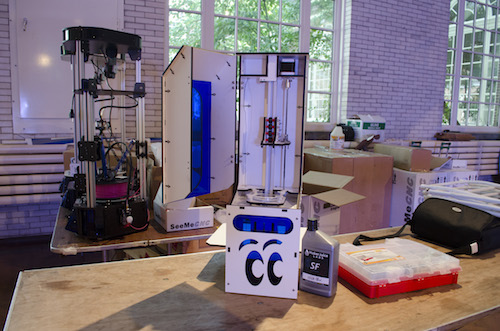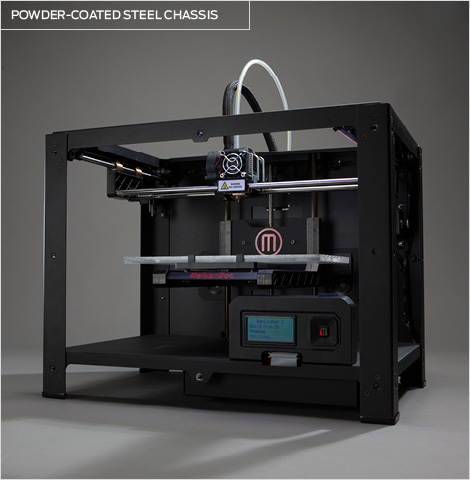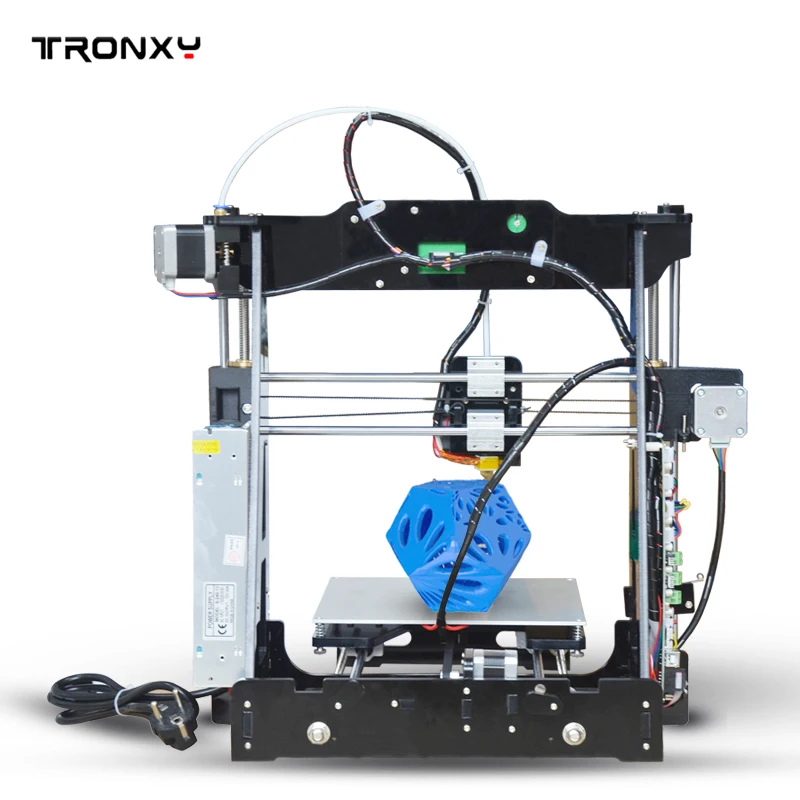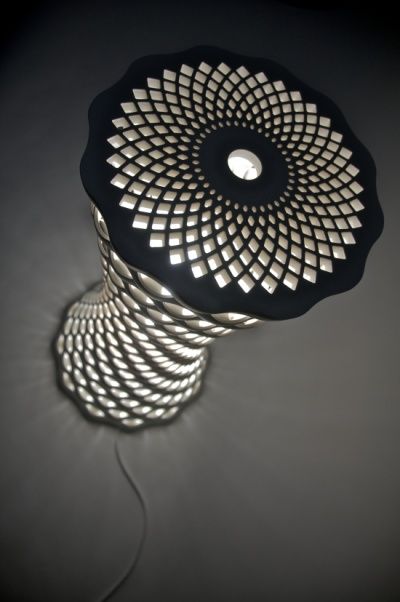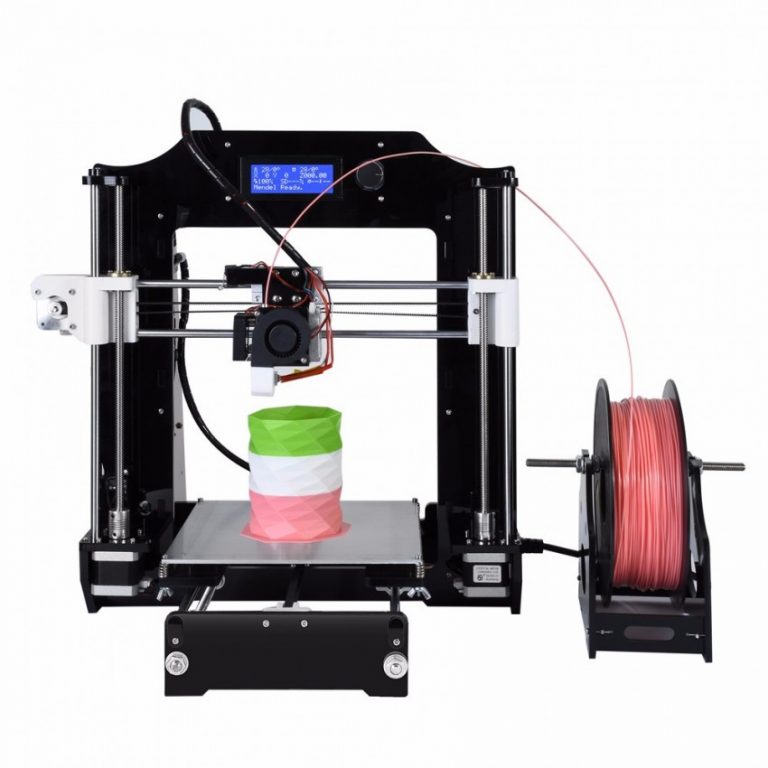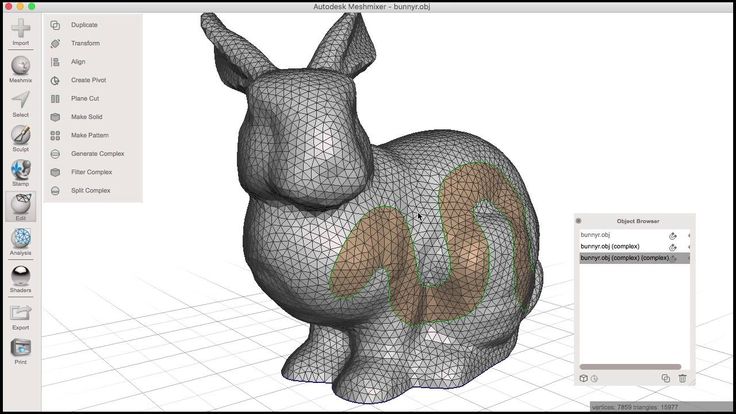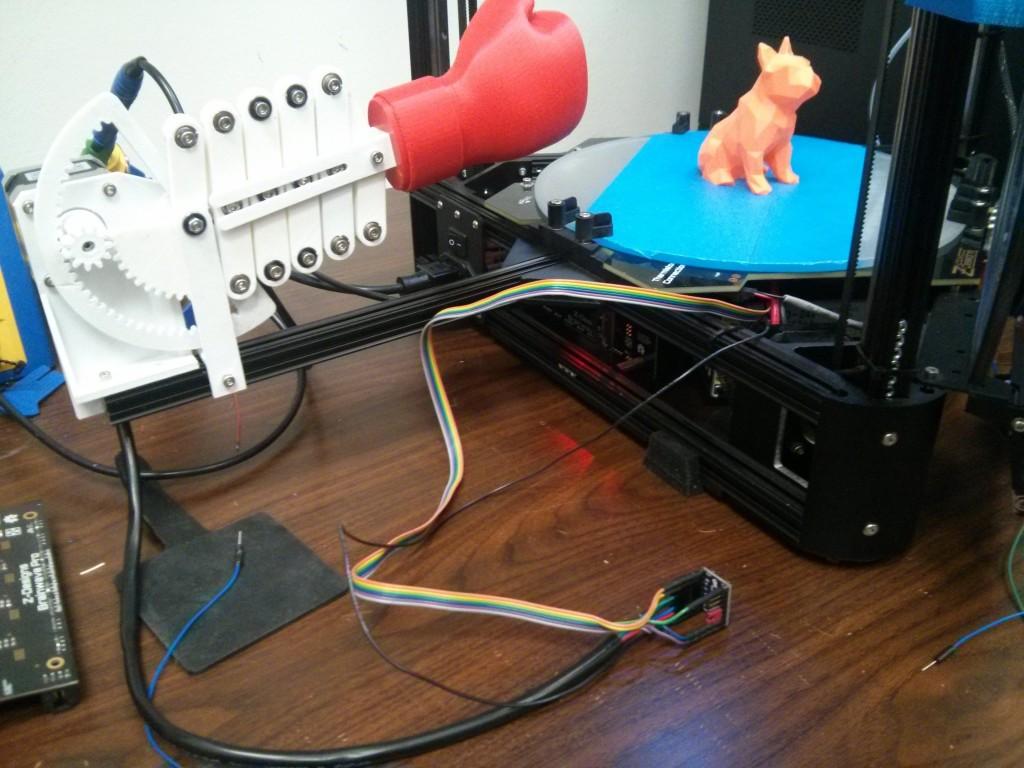Big resin 3d printer
Best Large Resin 3D Printers in 2022 (Every Price Range)
For some, size matters – and a normal-sized resin 3D printer just won’t cut it. For you size kings and queens, bigger is better, and you shouldn’t have to compromise on your quest for the biggest resin 3D printer around.
And with resin printing becoming more affordable than ever before, buying a large resin 3D printer vs outsourcing larger resin prints to a service has never been more cost-effective.
Why Buy a Large Resin 3D Printer?
First, by keeping prototyping in-house you retain full control, you can prototype as fast as your printer will print, and you still don’t have to compromise on size.
BUDGET PICK
Elegoo Saturn
One of the best low-cost large resin 3D printers
Great accuracy and speed with 2-3s per layer exposures, ideal for batch printing of miniatures or single larger prototypes
Reliable and durable printer
Available at:
Elegoo hereAmazon hereMID-RANGE PICK
Anycubic Photon M3 Max
The largest resin 3D printer for under $1000
For a lower-cost home business, you won’t find anything that can print more small models in an hour for cheaper
Amazing 6480x3600px 13. 6” 7K LCD for resin curing power
Available at:
Anycubic hereAmazon herePREMIUM PICK
Phrozen Sonic Mega 8K
70mm/h speed for even faster curing than Anycubic and Elegoo printers
Maintains excellent 43-micron resolution even at large build volumes
Ideal for high-quality prototyping, and for selling D&D and other custom 3D models
Available at:
Phrozen hereResin printers typically have smaller build volumes than their FDM counterparts, focusing instead on outrageous quality and incredibly smooth surface finishes.
However, this creates problems when you want to prototype larger parts, such as helmets or tools and equipment. With a large volume resin 3D printer, you’re free to print human-sized resin parts that can be tested right away.
Should You Buy Pixel 3XL in 2022
Please enable JavaScript
Should You Buy Pixel 3XL in 2022
And even if you’re a hobbyist looking to print large cosplay pieces or other parts, some large format resin 3D printers have become so affordable that you can even get in on the action at home.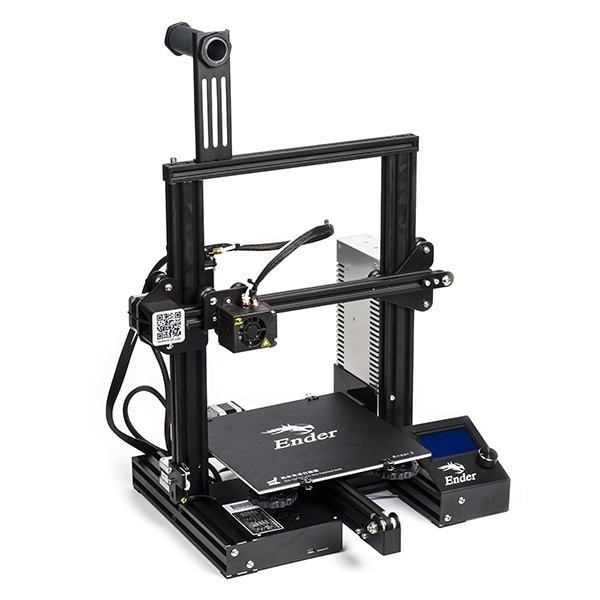
We have therefore picked our recommendations for the best build volume format resin 3D printers, in both more affordable and commercial and industrial price ranges and specs, so you can pick the ideal printer for you.
TOP PICKS
The Best Large Resin 3D Printers – Full Round-Up
Desktop Large Resin Printers
- Elegoo Saturn — cheapest large resin printer
- Anycubic Photon M3 Max — Best for $1,000
- Phrozen Sonic Mega 8K — best premium desktop large volume resin printer
Professional Large Resin Printers
- Peopoly Phenom L
- Peopoly Phenom Prime
- Formlabs Form 3L
The Best Large Resin 3D Printer Reviews
3DSourced is reader-supported. When you buy through links on our site, we may earn an affiliate commission. Learn more
Affordable Large Resin Printers
1.
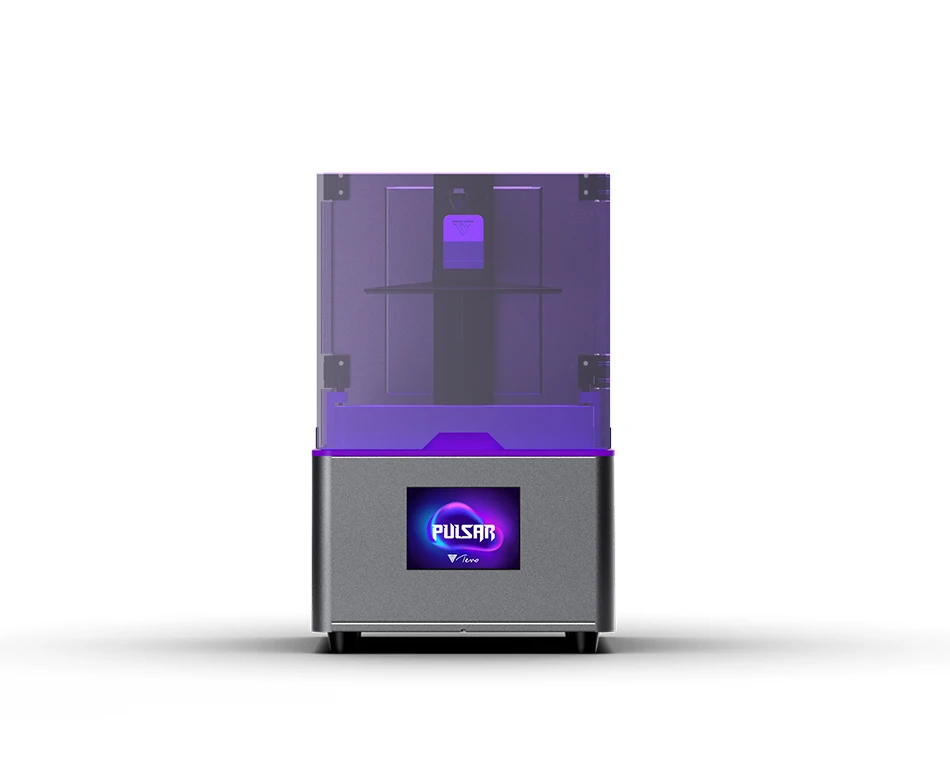 Elegoo Saturn
Elegoo Saturn- Price: Check latest price at Elegoo store here / Available at Amazon here
- Large resin 3D printer build volume: 192 x 120 x 200 mm
One of the best low-cost large resin 3D printers
Great accuracy and speed with 2-3s per layer exposures, ideal for batch printing of miniatures or single larger prototypes
Reliable and durable printer
Cons
Newer Saturn 2 and Saturn S may suit you better (but they’re more expensive)
The Elegoo Saturn packs a powerful punch with its 8.9-inch 4K monochrome LCD, offering fast 2-3 secs/layer printing — a 60% improvement on Elegoo’s cheaper Mars Pro — and with upgraded stellar quality.
The build volume is far larger than most entry-level large bed resin 3D printers at 192 x 120 x 200 mm, and while this isn’t large enough for printing tools prototypes like spades, for example, you can still print most normal-sized resin parts here.
And for smaller resin prints like casts for jewelry, small prototypes, or fun home projects, you can fit many within each print run.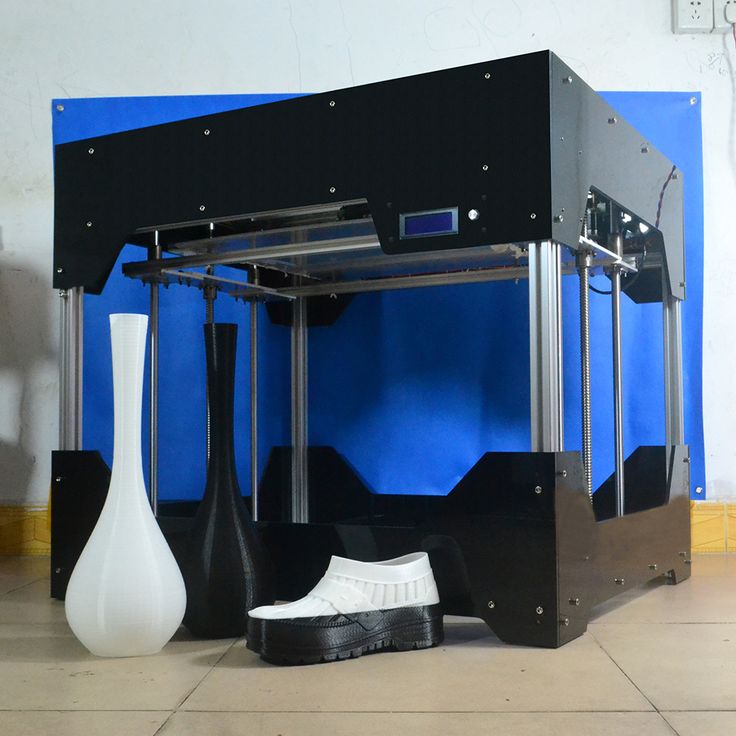 Elegoo Saturn printing a graboid from the movie Tremors. Credit: Dr. Barkau and Mr. Chris
Elegoo Saturn printing a graboid from the movie Tremors. Credit: Dr. Barkau and Mr. Chris
The upgraded Z-axis moves more precisely and accurately – and you’ll see the differences as it churns out delightful resin prints. The printer contains 54 LEDs to accurately print large objects and solidify resin more uniformly than ever before.
It’s also built to need less frequent leveling – saving you hassle – and the Elegoo Saturn is known for great adhesion when printing.
2. Anycubic Photon M3 Max
- Price: Check latest price at Anycubic here / Amazon here
- Build Volume: 298 x 164 x 300 mm
- XY Resolution: 46 microns
- Minimum Layer Thickness: 0.01 mm
- Speed: 60 mm/h
The largest resin 3D printer for under $1000
For a lower-cost home business, you won’t find anything that can print more small models in an hour for cheaper
Amazing 6480x3600px 13.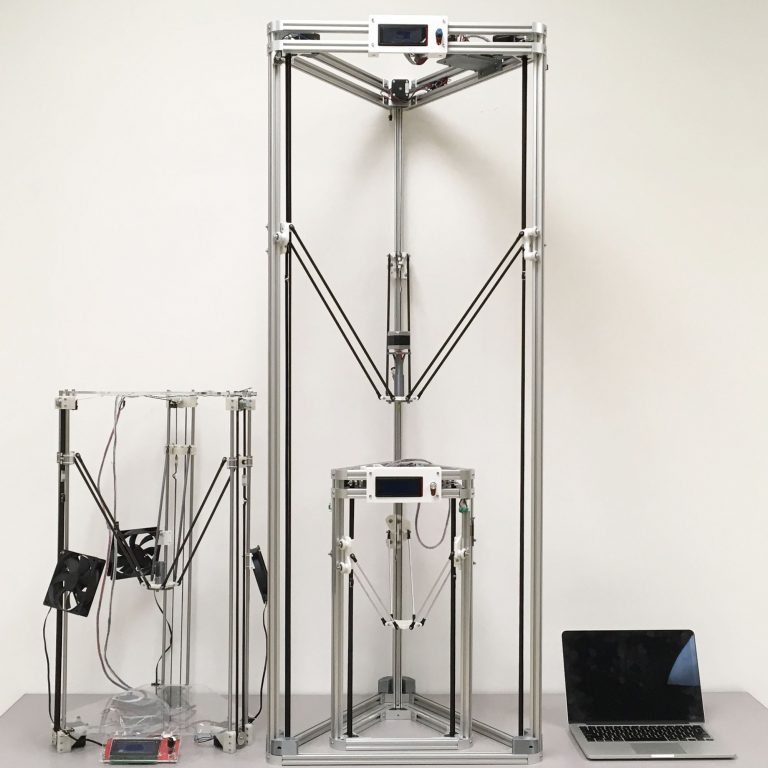 6” 7K LCD for resin curing power
6” 7K LCD for resin curing power
Cons
The smaller Photon M3 models offer slightly better XY resolution
The latest in Anycubic’s long line of budget-friendly resin 3D printers, the Photon M3 Max is the manufacturer’s first venture into super-sized build volume territory.
Encompassing 298 x 164 x 300 mm, it has plenty for all those bigger resin projects you’ve put off due to size constraints.
A 13.6″ 7K LCD delivers a dizzying 6480 x 3600 pixels, which, when put to the test, offer a 46 micron XY resolution, which considering the build volume, is extraordinarily accurate (resolution declines with size). That is sufficient detail to bring out armor and weapon details on tiny figures and minis, or to craft intricate and patterned jewelry.
It’s also super fast, at 60mm/hr print speed – which across the large print bed means you can dozens of minis in one job.
Elsewhere, Anycubic has weaved some welcome ease-of-use features. An automatic smart resin filling system sees a resin bottle mounted on the machine.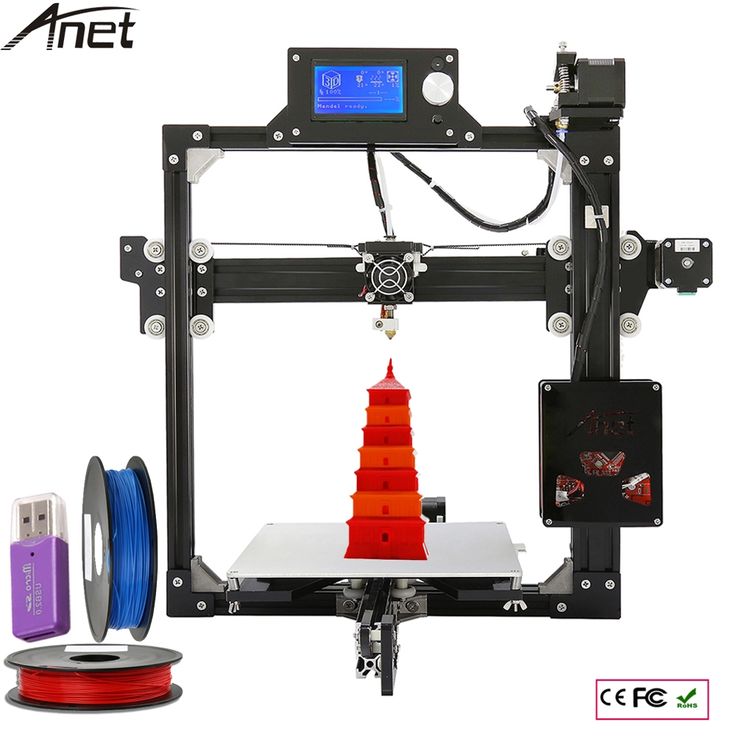 It automatically tops up the vat as required, almost guaranteeing uninterrupted printing for even the largest prints.
It automatically tops up the vat as required, almost guaranteeing uninterrupted printing for even the largest prints.
Elsewhere, there’s a replaceable screen protector and solid adhesion courtesy of a checkerboard build plate.3D Printed Moon Knight character. Source: Reddit
So, why opt for the Anycubic Photon M3 Max over the Phrozen Sonic Mega 8K?
For one thing, price. The Mega 8K costs more than twice as much, due to Anycubic’s sensible cost cutting (mainly plastic-heavy construction) to sell the M3 Max at a reasonable price.
Where the extra money goes is clear: the Mega 8K is faster, offers better print detail, and provides a large build volume.
But, for makers needing an XL printer at a reasonable price and one capable of delivering feature-rich and detailed prints, the Anycubic Photon M3 Max is a great compromise and the top budget large SLA printer pick.
That said, if you have the extra funds, then the Phrozen Sonic Mega 8K is a substantially better machine.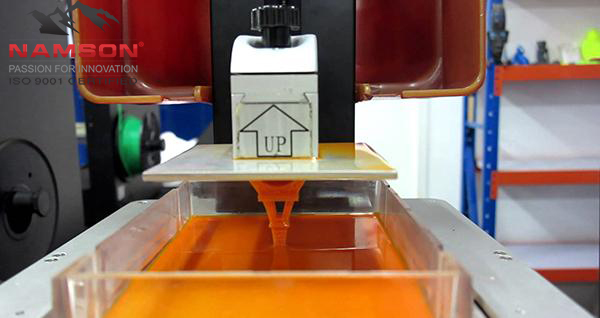 It has a much more versatile set of features that are better suited to serious prototyping, batch printing Dungeons & Dragons, or other tabletop miniatures to fuel a small business or workshop.
It has a much more versatile set of features that are better suited to serious prototyping, batch printing Dungeons & Dragons, or other tabletop miniatures to fuel a small business or workshop.
3. Phrozen Sonic Mega 8K
- Price: $2199 — Available at Phrozen here
- Build Volume: 330 x 185 x 400 mm
- XY Resolution: 43 microns
- Minimum Layer Height: 0.01 mm
- Speed: 70 mm/h
70mm/h speed for even faster curing than Anycubic and Elegoo printers
Maintains excellent 43-micron resolution even at large build volumes
Ideal for high-quality prototyping, and for selling D&D and other custom 3D models
Cons
Significantly more expensive than Anycubic and Elegoo printers — so may be too much for hobbyists and newer small business sellers
The Phrozen Sonic Mega 8K is not just one of the largest resin printers on the market, but is also widely regarded as one of the best, thanks to a careful balance of relative affordability, features, and the pristine detail offered by its 8K resolution LCD.
The star of the show is, of course, the 330 x 185 x 400 mm build volume, the most generously sized you’ll find among consumer-grade printers this side of Pluto. While we could stop there, the Phrozen Sonic Mega 8K has plenty more strings to its resiny bow.
The 15″ 8K LCD delivers superb print quality while avoiding the unusual downgrade in detail and feature richness associated with increased build volume. 8K means pixels for days – 7680 x 4320, if we’re being exact.
All these desirable features allow the Phrozen Sonic Mega 8K to reach an XY resolution of 43 microns, which is astounding for such a giant machine. Few other large resin 3D printers come close to delivering this level of detail in large-scale models and parts.Phrozen Sonic Mega 8K and a full sized 3d printed “Happy” mask. Credit: Josh Hardie
As Phrozen puts it:
‘You can now have both size and quality in one print, at the same time.’
Elsewhere, there are a few other notable mentions. The Phrozen Sonic Mega 8K ships pre-leveled, so no messing around with the tough task of calibrating a huge build plate before you can start printing.
The Phrozen Sonic Mega 8K ships pre-leveled, so no messing around with the tough task of calibrating a huge build plate before you can start printing.
Curing away at 70 mm/h, the Phrozen Sonic Mega 8K makes quick work of prints, too, which should help with large prints that already take a long time to complete – or business jobs.
It also features a dual linear rail and ball screw design for extra stability even in the upper reaches of the massive build volume. And lastly, the full metal exterior adds strength and durability but also mixes in a welcome touch of flair.
Priced at $2,200, the Phrozen Sonic Mega 8K requires a substantial investment, which makes it a good pick for serious amateur makers with deep pockets, and small businesses looking for a reliable workhorse with plenty of printing capacity.
- A cheaper alternative: Phrozen Mighty 4K for $599
Professional Large Resin 3D Printers
4. Peopoly Phenom L
- Price: $2,499 — Available at Matterhackers here
- Print volume: 345 x 197 x 400 mm
Large enough for even most large resin prototypes
Significantly improved on original Phenom: faster exposure times, double print speed, and 21-micron improved accuracy (from 72 to 51 microns)
Cons
More complex and industrial than a standard desktop resin printer
You can even then choose to upgrade and go further and buy the Phenom L, an even larger resin 3D printer for an extra $500. Resolution falls to 90um, but print volume explodes to 345 x 194 x 400 mm — it’s gigantic!Iron Man mask printed on the Phenom L. Source: Reddit
Resolution falls to 90um, but print volume explodes to 345 x 194 x 400 mm — it’s gigantic!Iron Man mask printed on the Phenom L. Source: Reddit
You can easily print prototype helmets, tools, and other larger resin prototypes in this large-format resin build area.
4.5 Peopoly Phenom Prime
- Price: $1899 — Available at Matterhackers here
- Build Volume: 276 x 155 x 400 mm
- XY Resolution: 51 microns
- Minimum Layer Height: 0.01 mm
- Speed: 60 mm/h
Since 2017, Peopoly has wowed 3D printer enthusiasts by delivering some of the roomiest, large-scale 3D printers, chiefly embodied by the Phenom range. Half a decade later, Peopoly has booted much of the original line-up to the technological graveyard to make room for its most sophisticated Phenom yet, the Peopoly Phenom Prime.
Both a spiritual successor and a logical evolution for the range, the Phenom Prime retains all of what we liked about the original but levels up the offering with modern features and niceties to make it faster and more precise.
It features a massive 276 x 155 x 400 mm build volume – same as on the Phenom – so no major changes there. Where things get interesting is the inclusion of a 5.5K (read 5448 x 3064 pixels) LCD that bumps up the XY resolution to a sharp 51 microns, a massive leap over the original’s 72 microns.Phenom Prime printing the pelvic bone. Source: Liqcreate 3D-printing
Unlike the original Phenom’s RGB LCD, the Prime features a monochrome screen. Par for the course in modern printers, but a welcome change that increases panel lifespan by up to three times.
The monochrome panel also boasts a higher light transmission rate or permeability, which results in much faster curing and a 70% reduction in exposure time. In other words, much speedier printing – a 100% increase according to Peopoly.
Elsewhere, the Phenom Prime has an improved cooling system to handle the heat produced by such a large machine. It’s also quieter, something that anyone who dabbled with the original will relish, given its reputation for blaring the decibels in full swing.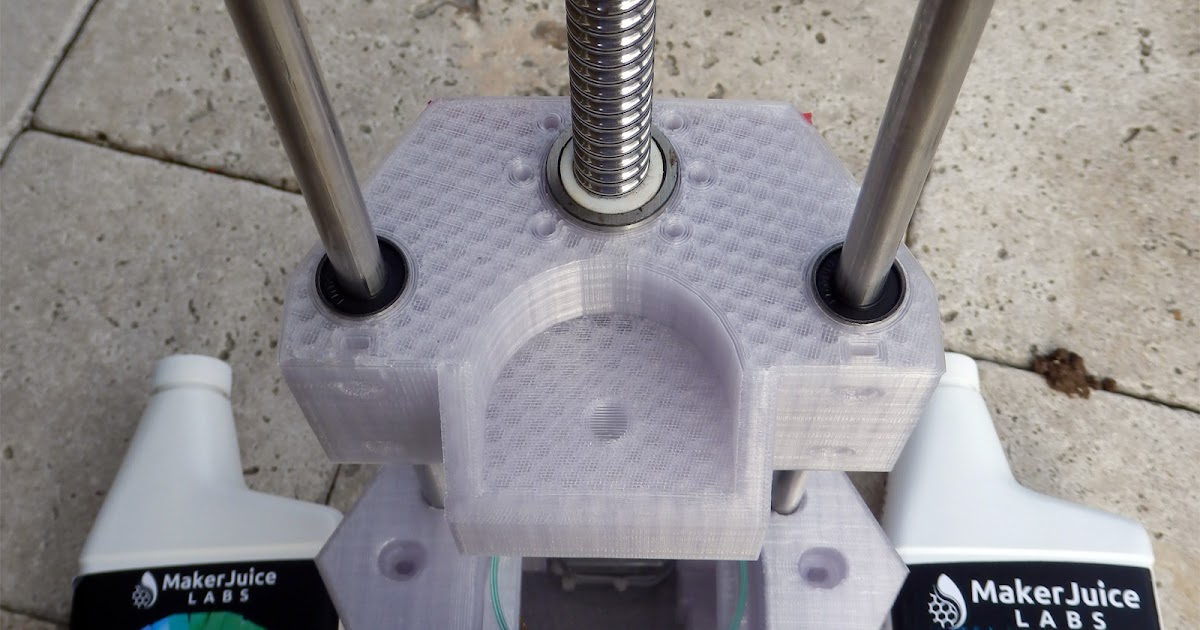
Who would benefit most from the Phenom Prime?
First and foremost, anyone that owns a Phenom and will make the most of the Prime’s sleek new upgrades.
Second, for us, the Phenom Prime slots in as an excellent option for a small workshop that needs more capacity and printing pep than the more budget-oriented printers like Anycubic Photon M3 Max.
5. Formlabs Form 3L
- Price: $10,999 — Available at Dynamism here
- Build volume: 335 x 200 x 300 mm
Designed specifically for large-scale resin part production, the Formlabs 3L build on Formlabs is already stellar reputation and brings it to the big leagues.
It uses the same Formlabs low force stereolithography SLA technology as on the Form 3, with two precision LPUs (Light Processing Units) for higher resolution prints and consistency throughout, and Formlabs stress that this indeed is the ideal solution to save your business money by no longer outsourcing your prototyping and fabrication.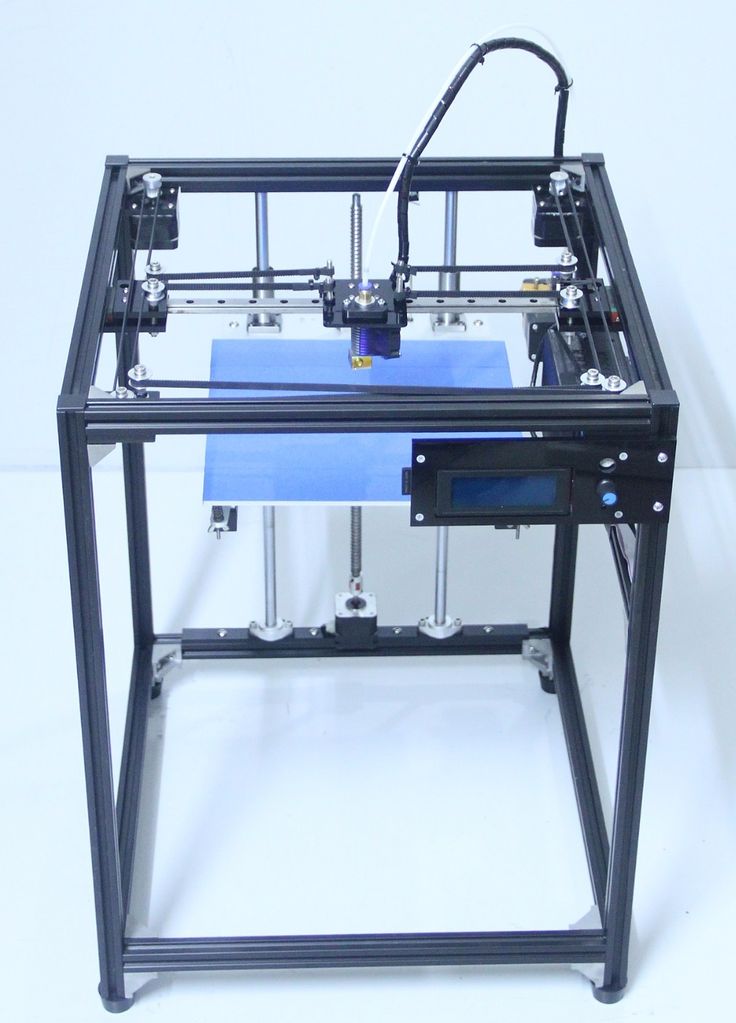
Numerous case studies show helmets printed in exquisite detail, shovel prototypes (though even with the printer’s large build area, it required three parts), nozzles, and even high-resolution full-size Teenage Mutant Ninja Turtle models — if you’re a design studio or uber-wealthy superfan.Clear kettle prototype printed on the Form 3L. Source: Twitter
It’s easier to use than most commercial large resin 3D printers, and seeks to minimize hassle and the steep learning curve across the board — such as by offering automatic resin dispensing, simplifying the entire slicing and software workflow, and with the delightfully intuitive 5.5-inch full-color touchscreen.
If you’re running a 3D printer farm you can manage them all via the cloud, and you can also make use of Formlabs’ wide resin selection: standard, engineering, flexible, tough and durable, dental or medical, and even jewelry castable resin — you can make almost anything for any industry use with the Form 3L.
For home use, it’s probably overkill, but it’s possibly the best large SLA printer, offering fantastic build volume and high-precision printing.
6. Photocentric Liquid Crystal Magna
- Price: $15,000+
- Print volume: 510 x 280 x 350 mm
British company Photocentric make some of the highest resolution LCD technology printers around for industry, with the LC Magna designed for precise dental and product design prototyping at large scales and sizes.
It’s super-fast, a giant resin printer, and accurate, with Photocentric’s own resins helping keep costs lower over the long term.
Photocentric also manufactures a wash module for washing prints and a curing module for curing prints that require this, and the LC Magna has been used to prototype and manufacture glasses, dental models, models figurines, and even motorbike engines.Finished prints on the Liquid Crystal Magna. Source: Photocentric
The 4K 137-micron display delivers accuracy over the entire print bed, using the benefits of anti-aliasing, and uses Photocentric’s patented blow-peel technologies to prevent some of the negative effects of large resin build areas coming into play, and retain the intricate details on large models and small objects at high speed.
Overall, it’s costly but offers key benefits as a big resin 3D printer in large-scale industry and prototyping.
Buyer’s Guide – Things to Consider When Buying a Large Resin 3D Printer
Build Volume
Build volume is obviously the main consideration when picking a large-format resin printer to buy. What size you need depends entirely on your plans and needs.
For most amateur makers looking to print cosplay props, highly detailed figures in batches, and larger decorative pieces, a build volume around 300 x 150 x 300 mm should be sufficient. For you, either Elegoo Saturn range, or the Anycubic Photon M3 Plus or Max are more than enough.
If you’re unsure exactly what you’ll want to print in the future, it’s worth opting for something a little larger than your needs.
Your ambitions and project may change over time, so it’s better to have some leeway to work with.
LCD and Pixel Count
Avoid RGB LCDs at all costs. The technology is now outdated: it’s slower and has a shorter lifespan.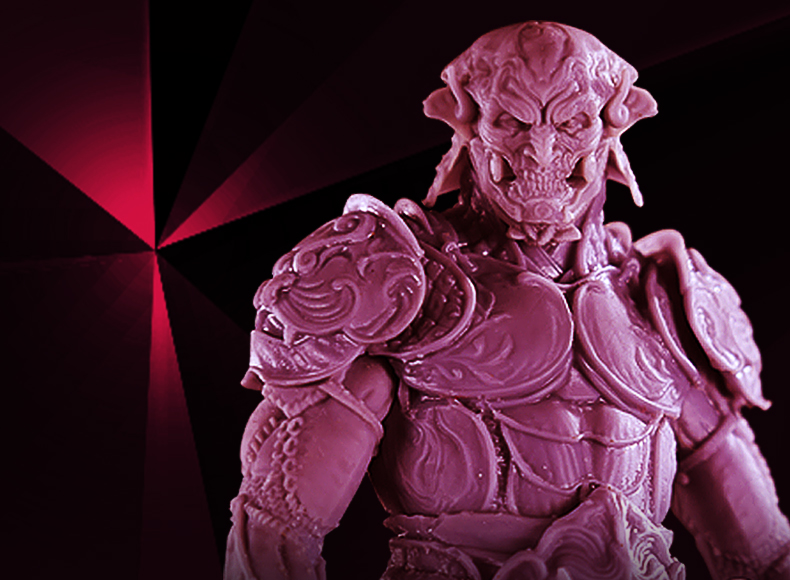 Instead, choose a large resin 3D printer with a monochrome LCD – a must-have in our book.
Instead, choose a large resin 3D printer with a monochrome LCD – a must-have in our book.
It’s worth noting that the larger the LCD (and, by extension, build volume), the more pixels have to stretch and expand to cover the entire plate effectively. The fewer pixels, the less detail a printer can produce.
This means that LCDs with a higher resolution are a must-have for larger printers. We’d recommend at least 4K, but don’t hesitate to pivot to printers pushing 5K and even 7K/8K LCDs if your budget allows it.
The Elegoo Saturn has a 4K LCD, the Photon M3 Max has 7K, and the Sonic Mega 8K has, you guessed it, an 8K screen.
XY Resolution
XY resolution determines the level of accuracy a printer can produce, the amount of detail, the quality of the surface finish, and how well it will render features.
Larger build volumes used to mean a downgrade to XY resolution, but nowadays, it’s possible to buy large format printers with excellent resolution.
Anything around 50 microns should serve the large majority of makers, but if you want that extra bit of detail, opt for printers with a lower XY resolution.
Build Quality and Stability
Managing movement in large format resin printers is vital if you want uniform fine details and precision throughout your prints. Look to printers with solid metal frames to improve durability, dual linear rails, and sturdy covers/shrouds/hinged doors.
These tend to peter out as the price drops, but so does the build volume, which somewhat cuts down on their utility. In other words, don’t be put off by budget large format resin 3D printers that don’t have all the fancy features of the pricier XL alternatives.
Print Speed
Remember that MSLA printers cure entire layers at once, unlike FDM. So, speed – in terms of how many models you can create per hour or day – is directly impacted by the size of the build volume. This is where the size of a resin printer is so important.
Though it’s easy to be drawn in by the pull of blisteringly fast print speeds, it doesn’t mean you’ll actually always be printing at these speeds.
These high speeds are pushed as marketing ploys – often, you won’t come close to these numbers, especially if you want high-detail prints.
But, if you plan to use a resin printer as a daily go-to machine for batch printing, more speed certainly makes a tangible difference to print times. 60 mm/h is becoming somewhat of a standard for most large resin 3D printers and represents a good starting point for most makers.
Some speeds among the printers we recommend:
- Anycubic Photon M3 Max: 60mm/h
- Phrozen Sonic Mega 8K: 70mm/h
- Peopoly Phenom Prime: 60mm/h
Price
For a modestly-sized but still comparatively large resin printer, expect to pay around $500 to $700. We recommend the Elegoo Saturn printers here, but the Anycubic Photon M3 Plus is also great.
For mid-range machines with plenty of capacity, expect to pay $1000 or slightly more. The Anycubic Photon M3 Max is bigger than the M3 Plus, and is ideal for this price range and use.
From here, prices surge to thousands of dollars for large resin 3D printers with the biggest build volumes and features. These tend to be reserved for business and professional workshops with the budget to spare.
Read more: Photon M3 vs M3 Plus vs M3 Max – all the differences
Large Resin 3D Printer FAQs
What Resin Printer Has the Biggest Build Plate?
The consumer-grade resin 3D printer with the biggest plate is currently the Phrozen Sonic Mega 8K. Phrozen’s flagship large format SLA printer features a 15″ 8K LCD, 330 x 185 mm build plate for a total build volume of 330 x 185 x 400 mm.
Jumping up in price, we have Peopoly Phenom XX, which has a 23.8″ 4K LCD and 527 × 296 x 550 mm build volume. It’s priced at $7,500, positioning it firmly in the professional portion of the resin 3D printer market as one of the largest SLA printers available.
How Big Can a Resin Printer Print?
A resin 3D printer can print as big as its build volume allows. For instance, the Anycubic Photon M3 Max has a 300 x 164 x 298 mm build volume, meaning you could print a solid cube of that size on the printer.
What Is the Biggest Anycubic Resin Printer?
The biggest resin printer from Anycubic is the Photon M3 Max, the largest of the manufacturer’s recently launched M3 series printers.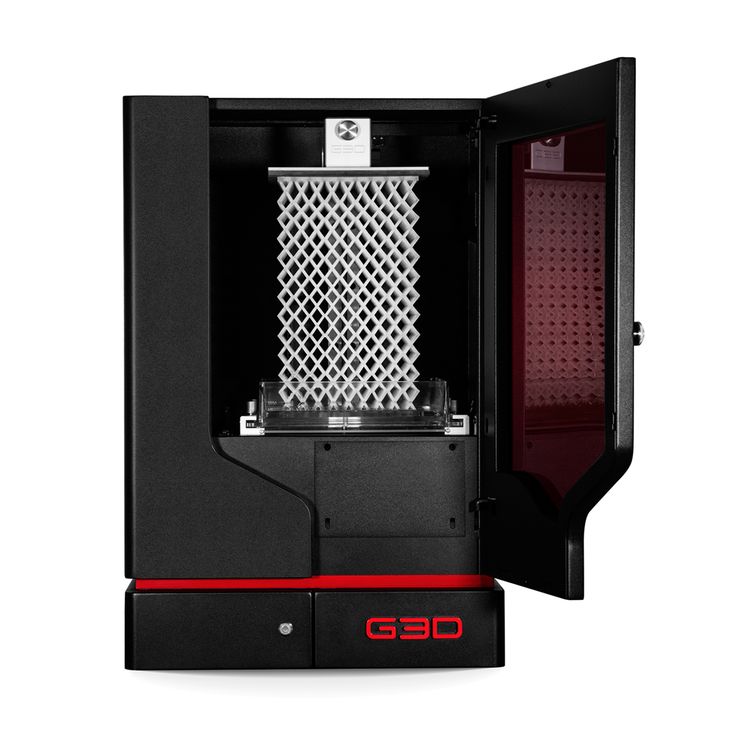 It has a build volume of 300 x 164 x 298 mm, which positions it as a large format resin 3D printer.
It has a build volume of 300 x 164 x 298 mm, which positions it as a large format resin 3D printer.
What is the largest 3D resin printer?
The Photocentric Crystal Magna is one of the largest resin 3D printers in the world, but it’s too expensive for average makers at home. The largest desktop resin 3D printers are the Anycubic Photon M3 Max, Elegoo Jupiter, and Phrozen Sonic Mega 8K.
What is the biggest Elegoo 3D printer?
The biggest resin printer from Elegoo is the Elegoo Jupiter 12.8” 6K 3D printer. It has a build volume of 278 x 156 x 300 mm, and a 12.8-inch 6K monochrome LCD to print even the largest models at 70mm/h.
Further reading:
- The best resin 3D printers
- DIY SLA 3D printers you can build yourself
- The best large 3D printer (FDM and other technologies)
- Best 3D printers for small businesses
- Top professional 3D printers
- 500x500x500mm 3D printers
- Best wash and cure stations
Top-Notch Equipment with Big Build Volume
Veterans of additive manufacturing know that the first 3D printing technology to appear was stereolithography — it was as far back as 1986.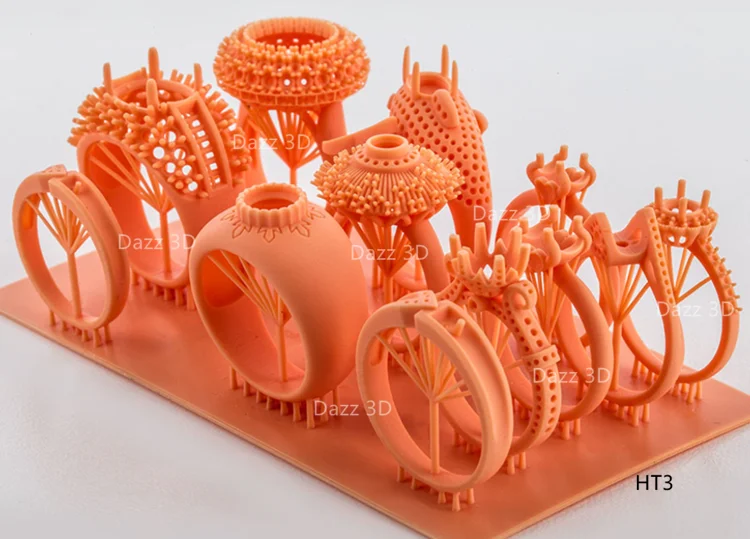 Since then, there’ve been developed plenty of other methods like FDM and SLS; on the other hand, the popularity of stereolithography technology drastically increased when resin 3D printers became much more affordable and advanced. As a result, now the market offers a variety of options for printing in photosensitive resins, with multiple smart features and build volumes for different purposes.
Since then, there’ve been developed plenty of other methods like FDM and SLS; on the other hand, the popularity of stereolithography technology drastically increased when resin 3D printers became much more affordable and advanced. As a result, now the market offers a variety of options for printing in photosensitive resins, with multiple smart features and build volumes for different purposes.
Credit: allthat3d.com
This is Top 3D Shop, and in this article, we are going to tell you about large resin 3D printers. Read on to learn about the most notable models and their peculiarities, as well as the applications of SLA printing and the criteria to be taken into account when choosing such equipment.
What is a large resin 3D printer?
Before we get to discussing specific models and their pros and cons, let’s have a brief look at the technology called vat photopolymerization. As the name suggests, it’s the process of turning a liquid polymer into a solid object under UV light exposure. Vat polymerization comes in three main types which are SLA, DLP, and LCD (or MSLA).
Vat polymerization comes in three main types which are SLA, DLP, and LCD (or MSLA).
We’ve already mentioned that the first 3D printing technology was SLA (Stereolithography Apparatus) invented and patented by Chuck Hull in 1986. Like the other vat polymerization technologies, this one cures photosensitive resin, layer by layer, to print a 3D object. The difference lies in the source of UV light used for polymerization. SLA employs the UV laser to “draw” each layer of the future model. The method provides high quality prints but the downside of that is the trade-off in speed.
(Sometimes resin 3D printing in general can be referred to as SLA 3D printing, although it may cause ambiguity.)
Credit: burkhartdental.com
DLP (Digital Light Processing) technology uses a digital light projector screen as a light source. This technology gives you a significant gain in speed, as a whole layer is cured all at once. On the other hand, classic SLA printers can feature higher resolution compared to those using a projector.
The newest type of vat polymerization technology is called LCD (which stands for Liquid Crystal Display). It’s pretty similar to DLP, but instead of a projector it uses an LCD as a mask for the light coming from an array of UV LEDs.
Credit: phrozen3d.com
As was already mentioned, the popularity of resin 3D printers is growing rapidly as they are becoming more advanced and user-friendly, and definitely less pricey. First these devices were used for printing small objects requiring high accuracy and flawlessly smooth surfaces, like in jewelry. But some users wanted to have bigger prints without compromising on quality. So eventually, resin 3D printers acquired bigger build volumes, and now we can speak of a great number of large resin 3D printers that entered the market.
Uses of a large resin 3D printer
Resin 3D printing with its precision, time-saving, and the opportunity of using a great variety of materials with different characteristics, is highly recommended for use in many sectors like jewelry, healthcare, engineering, aerospace, automotive, robotics, education, and more. This technology helps to create complex finely-detailed models which would be difficult to produce using traditional methods. Let’s look at some examples.
This technology helps to create complex finely-detailed models which would be difficult to produce using traditional methods. Let’s look at some examples.
Medical and dental tools
Healthcare is one of the industries that benefit most from resin 3D printing. The variety of applications is numerous: from producing medical tools, which, being made of special medical resins, are biocompatible and can be sterilized in a usual way, to making organ models that help doctors make surgery preparations. In dentistry, special dental resins are utilized to produce models of crowns and bridges, surgical guides, splints and retainers with incredible accuracy.
Credit: instituteofdigitaldentistry.com
Gifts and toys / miniatures
Resin 3D printing technology has already been highly appreciated by hobbyists looking for a simple way of making miniatures and customized figures. Toy and gift industries also greatly benefit from employing 3D printing in manufacturing.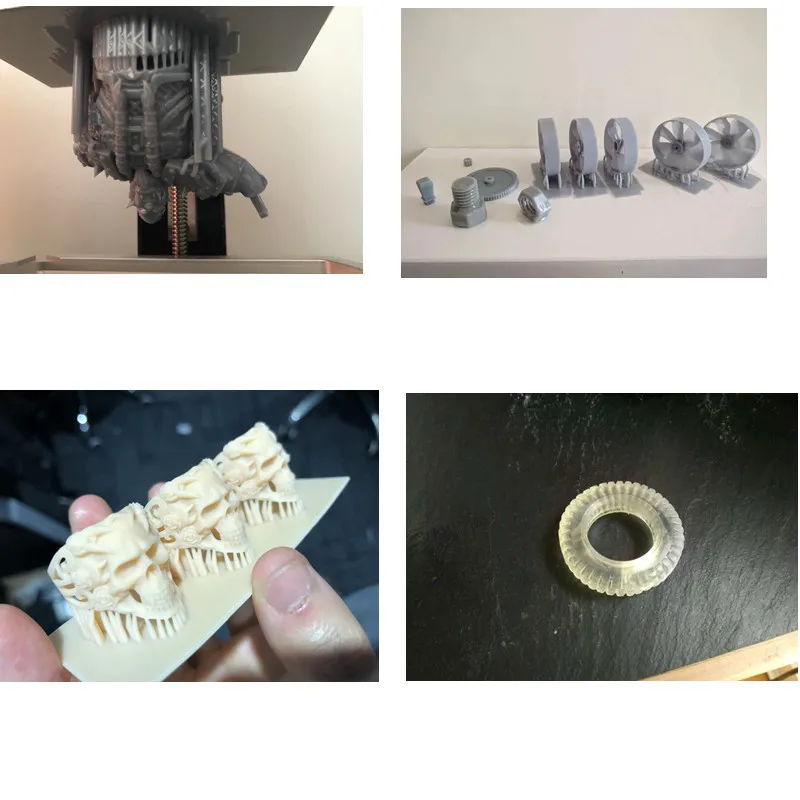 One more interesting application of the technology in the toy industry is repairing toys and creating spare parts for them.
One more interesting application of the technology in the toy industry is repairing toys and creating spare parts for them.
Credit: facfox.com
Education and entertainment
As the resin 3D printing industry grows, educational institutes are starting to use it for research and education purposes. Both students and professors utilize 3D printers for a variety of purposes like printing visual AIDS or models for their projects. In some colleges, professors make use of 3D printers while telling the students about additive manufacturing technology. There are a lot of sites that offer huge selections of free 3D printing models for entertainment and educational purposes.
Credit: 3dstartpoint.com
The best large resin 3D printers: affordable, commercial and industrial
A wide variety of large format resin 3D printers can be divided into three categories, let’s call them affordable, commercial, and industrial devices. Printers relating to the first category are the best choice for home use, as they are quite affordable and not very big in size. They can also be used for the needs of small businesses, and would be perfect in the field of education. The category of commercial printers is aimed at small and medium-sized businesses, but some consumers can also become interested in buying such a device, especially if they are planning on printing some huge ambitious projects, like, for instance, certain elements for cosplay costumes. Commercial large-scale resin 3D printers normally have more spacious build volumes than devices from the category of affordable printers. And, last but not least, industrial printers with their impressively high performance and no less impressive price are mostly targeted at large manufacturing companies with high production volumes.
They can also be used for the needs of small businesses, and would be perfect in the field of education. The category of commercial printers is aimed at small and medium-sized businesses, but some consumers can also become interested in buying such a device, especially if they are planning on printing some huge ambitious projects, like, for instance, certain elements for cosplay costumes. Commercial large-scale resin 3D printers normally have more spacious build volumes than devices from the category of affordable printers. And, last but not least, industrial printers with their impressively high performance and no less impressive price are mostly targeted at large manufacturing companies with high production volumes.
Affordable
Anycubic Photon Mono X 3D printer
The Anycubic Photon Mono X is a high-speed LCD resin 3D printer. It boasts a 4K resolution panel which allows for high accuracy of printing with a single layer depth not exceeding 0.01 mm. The printing speed is impressive — it takes only 1–2 seconds to print a layer. The Photon Mono X features a spacious build volume of 192х120х245 mm. Built-in safety functions are helpful if you are planning to use the printer at home with kids. The Photon Mono X offers a number of convenience features, such as Wi-Fi and remote control. All this makes the Anycubic Photon Mono X one of the best large format resin 3D printers in its price range.
The Photon Mono X features a spacious build volume of 192х120х245 mm. Built-in safety functions are helpful if you are planning to use the printer at home with kids. The Photon Mono X offers a number of convenience features, such as Wi-Fi and remote control. All this makes the Anycubic Photon Mono X one of the best large format resin 3D printers in its price range.
Credit: @leandro_benignoart / Instagram
Pros
- high printing speed
- great resolution
- Wi-Fi connectivity
- strong brushed aluminum panel
- built-in safety functions
Cons
- rather expensive
- some users complain of the software performance
Phrozen Sonic Mighty 4K resin 3D printer
The Phrozen Sonic Mighty 4K offers one of the largest build volumes in its price range — 200x125 x220 mm. The machine is designed for printing one big model or multiple smaller parts in one batch.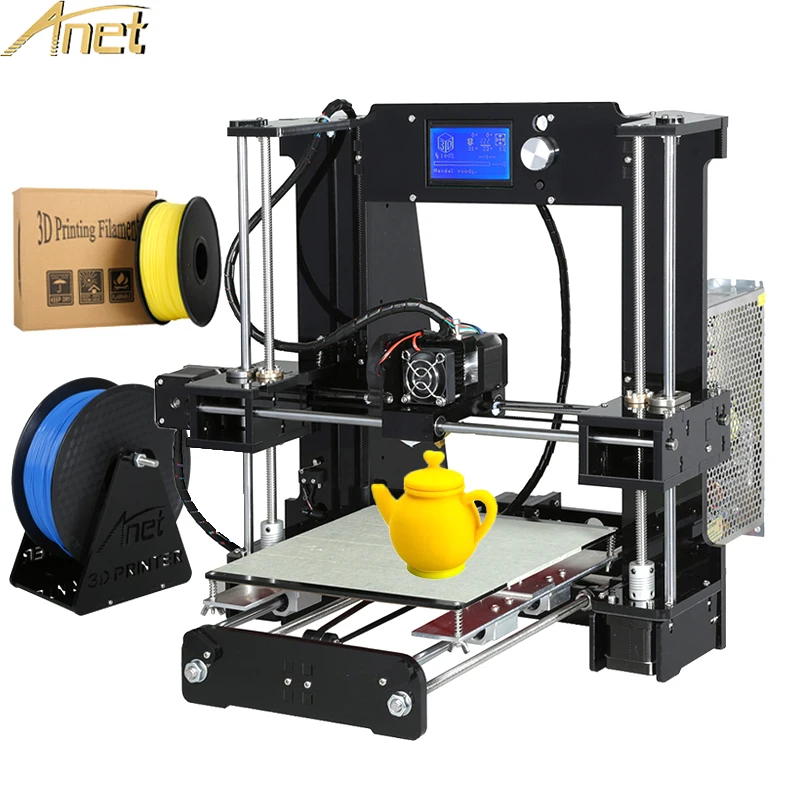 A 9.3-inch 4K monochrome LCD screen offers excellent printing quality alongside the high speed. The printer is equipped with a 5-inch touchscreen for navigation and settings configuring. The device is compatible with the free Chitubox slicer optimized to work with resin 3D printers. The Phrozen Sonic Mighty 4K would become a good choice both for commercial and home use. The printer is widely used in dentistry.
A 9.3-inch 4K monochrome LCD screen offers excellent printing quality alongside the high speed. The printer is equipped with a 5-inch touchscreen for navigation and settings configuring. The device is compatible with the free Chitubox slicer optimized to work with resin 3D printers. The Phrozen Sonic Mighty 4K would become a good choice both for commercial and home use. The printer is widely used in dentistry.
Credit: printablescenery.com
Pros
- high printing speed
- excellent print quality
- large build volume for its class
- easy operation
Cons
- resin vat is not easy to fit
- small touchscreen
Creality LD-006 3D printer
Like most large volume resin 3D printers in this segment, the Creality LD-006 is based on LCD technology. The device features a new 8.9-inch monochrome LCD screen with 4K resolution. The build volume is decent enough — 192x120x250 mm.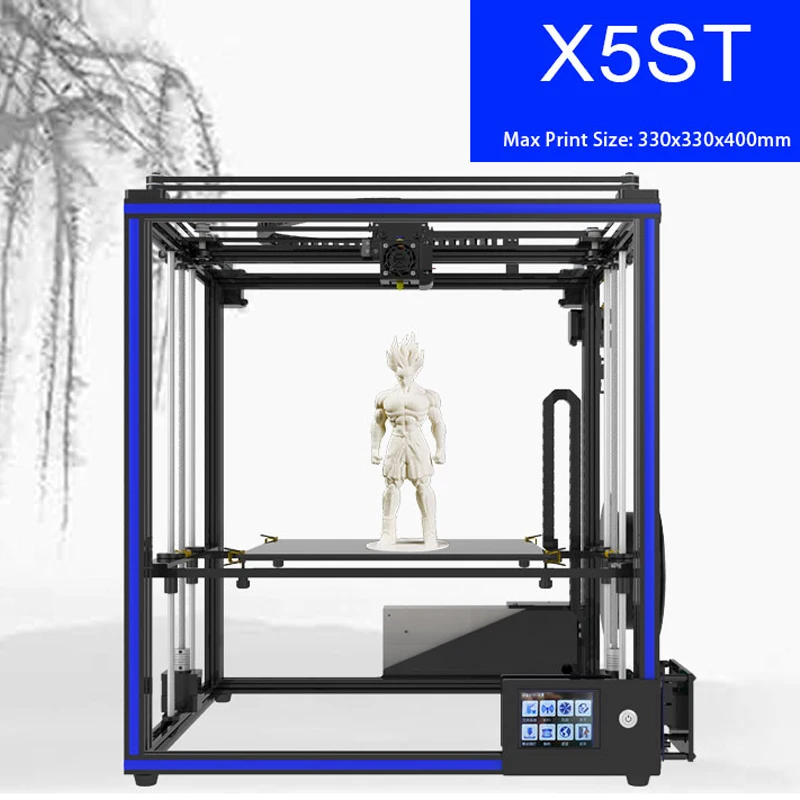 The Creality LD-006 boasts a renewed vat which adds to the user’s convenience. The vat has a liquid level line which helps to control the resin expenditure, and special stands to prevent the FEP film from being damaged. The LD-006 has a built-in air filtering system, which seems to be pretty useful when working with resins that are characterized by strong odor.
The Creality LD-006 boasts a renewed vat which adds to the user’s convenience. The vat has a liquid level line which helps to control the resin expenditure, and special stands to prevent the FEP film from being damaged. The LD-006 has a built-in air filtering system, which seems to be pretty useful when working with resins that are characterized by strong odor.
Credit: fabbaloo.com
Pros
- high resolution and print quality
- convenient vat
- built-in air filtration system
- great touchscreen
Cons
- no Wi-Fi connection
- a bit pricey
Uniz IBEE 3D printer
The Uniz IBEE is a multi-purpose desktop LCD 3D printer of medium size. It offers an 8.9-inch 4K monochrome LCD screen and the build volume of 192x120x200 mm. Its new optical system employs a collimated light source, providing the 1000:1 contrast ratio. The device has a wide range of connectivity options including Wi-Fi, and comes with the proprietary powerful and user-friendly software, which makes the Uniz IBEE a win-win choice for beginners.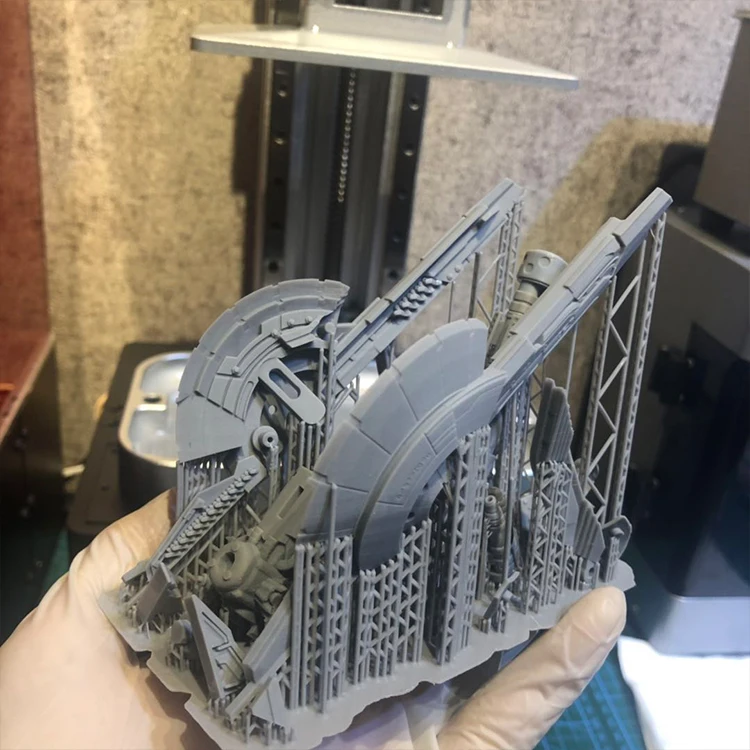
Credit: uniz.com
Pros
- great quality of printing
- decent build volume
- rich connectivity options
- easy to use
Cons
- changing the vat film requires a lot of time
Commercial
Phrozen Sonic MEGA 8K resin 3D printer
The Phrozen Sonic MEGA 8K stands out among other large resin 3D printers as it provides both stunning print quality and one of the largest print volumes on the market. Its 15-inch 8K mono LCD panel allows you to print at 43-micron resolution, which gives you almost twice more detailed prints than most competitors can offer. The Sonic MEGA 8K comes with a pre-calibrated build plate, which means your printer is ready for use right out of the box. The device has a full-metal exterior and its more than competitive price makes it the best choice for those seeking for really large and highly detailed prints.
Credit: reddit.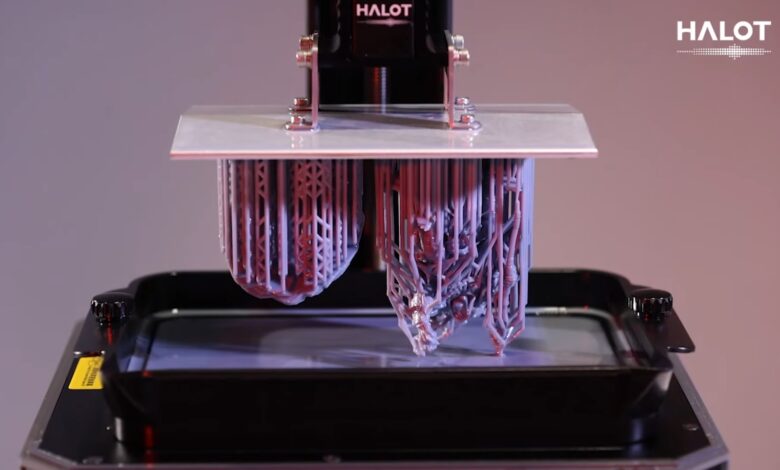 com
com
Pros
- excellent print quality
- huge build volume
- pre-calibrated build plate
- great value for money
Cons
- rather slow printing speed
Uniz Slash 2 Pro 3D printer
The Uniz Slash 2 Pro is an upgraded version of the popular Slash 3D printer. Its liquid cooling system together with the intelligent heat management provides fast curing time which results in high printing speed. The printer uses LCD 3D printing technology and is equipped with a 4K LCD screen. The build volume is 192x120x400 mm, which is quite enough for most projects. The Uniz Slash 2 Pro sports a durable resin vat with the automatic level control.
Credit: uniz.com
Pros
- extremely fast printing speed
- large build volume
- high printing accuracy
- quite affordable
- durable resin vat
- powerful and user-friendly software
Cons
- no touchscreen for the printer control
Phrozen Sonic XL 4K resin 3D printer
The Phrozen Sonic XL 4K is a large format resin 3D printer specially designed for the dental industry, although it perfectly suits the needs of jewelry production, prototyping, and other industries requiring high-accuracy printing.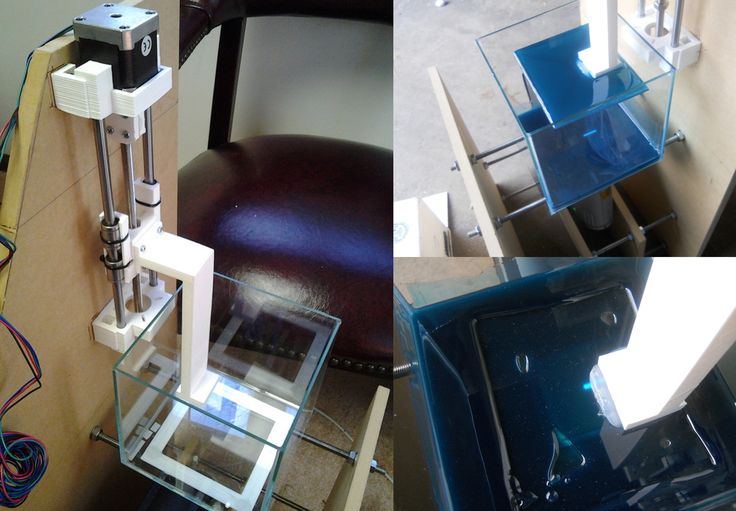 It features a monochrome LCD matrix with a resolution of 3840x2160 and a pretty large print area. One of the advantages of the Sonic XL 4K is the support of various types of resins by different manufacturers. The optical system of the device has been improved compared to the previous models. The Phrozen Sonic XL 4K also has a more powerful ParaLED® 3.0 module which provides an even layer thickness over the entire area of the build plate.
It features a monochrome LCD matrix with a resolution of 3840x2160 and a pretty large print area. One of the advantages of the Sonic XL 4K is the support of various types of resins by different manufacturers. The optical system of the device has been improved compared to the previous models. The Phrozen Sonic XL 4K also has a more powerful ParaLED® 3.0 module which provides an even layer thickness over the entire area of the build plate.
Credit: reddit.com
Pros
- fast printing speed
- large build volume
- fine precision
- compatibility with various resin types
- a lot of connectivity options
Cons
- no warranty for the building platform and the LCD screen
EPAX X156 3D printer
With a 345x194x400 mm build volume, the EPAX X156 is one of the largest resin 3D printers in the market. The printer features a 15.6-inch 4K RGB screen which is less durable and requires more time to cure the layers, compared to monochrome screens.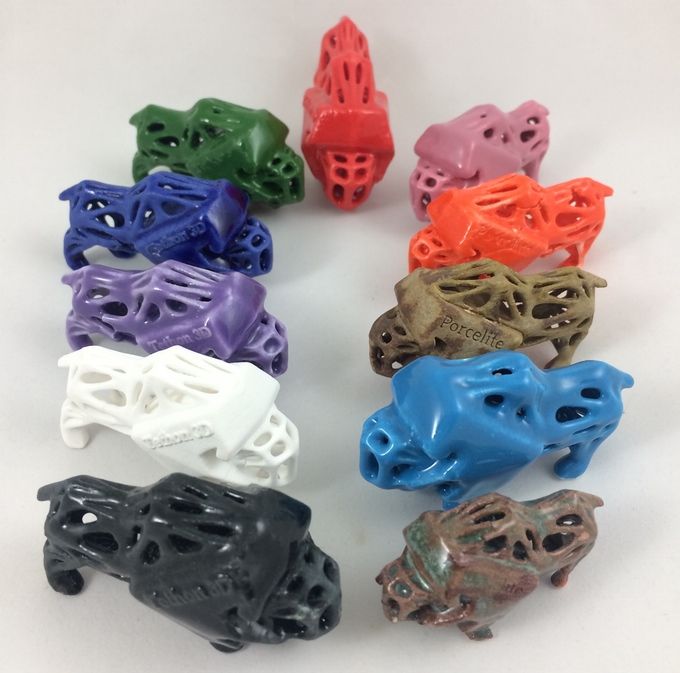 The good news is that in the case of the EPAX X156 it doesn’t seem much of a problem as the manufacturer provides the opportunity to upgrade the device with a smaller but more durable 4K monochrome screen with the same resolution and a 4 times faster printing speed.
The good news is that in the case of the EPAX X156 it doesn’t seem much of a problem as the manufacturer provides the opportunity to upgrade the device with a smaller but more durable 4K monochrome screen with the same resolution and a 4 times faster printing speed.
Credit: reddit.com
Pros
- super large build volume
- fine precision and great surface finish
- factory-leveled printing plate
- large metal resin vat
Cons
- small touchscreen (3.5 inches)
- RGB LCD screen is less durable and features a slower printing speed (although can be upgraded to monochrome)
Formlabs Form 3 / 3L
Credit: formlabs.com
The Formlabs Company has developed a completely new proprietary printing technology called LFS (Low Force Stereolithography) for its Form 3/3L models. This technology, based on SLA, ensures edge-to-edge consistency of the print quality. The major difference between the two models is the build volume, which is 145x145x185 mm for the Form 3 and 335x200x300 mm for the Form 3L. Both printers can work with various resin types which increases their versatility and allows their use in different industries.
The major difference between the two models is the build volume, which is 145x145x185 mm for the Form 3 and 335x200x300 mm for the Form 3L. Both printers can work with various resin types which increases their versatility and allows their use in different industries.
Credit: formlabs.com
Pros
- large build volume (for the 3L model)
- high printing speed
- very user-friendly, allows fully automatic one-click printing
- works with a great number of various resin types
Cons
- support structure is required for every build
- some users reported problems with dust inside the laser unit
Peopoly Phenom Prime
Credit: peopoly.net
The Peopoly Phenom Prime is a large resin LCD 3D printer featuring a great monochrome 12.5-inch 5.5K screen, which allows printing with a resolution of 51 microns. The device boasts a huge 276x155x400 mm build volume. The Phenom Prime has an improved cooling system compared to its predecessor, the Phenom model.
The Phenom Prime has an improved cooling system compared to its predecessor, the Phenom model.
Credit: peopoly.net
Pros
- one of the biggest resin 3D printers
- monochrome high resolution LCD screen
- supports various resin types
Cons
- loud printing process
Industrial
Industrial large resin 3D printers are to meet special requirements, one of them being definitely an extremely high printing speed. None of the existing technologies is capable of providing such speed level. The growing demands for high-speed 3D printing have led to developing such ultra-fast printing technologies as CLIP and LSPc. Let’s see what’s so special about them.
Nexa3D vs Carbon3D
The CLIP (Continuous Liquid Interface Production) technology was developed by the Carbon 3D Company. Like with SLA technology, the models are printed layer by layer, but you don’t have to wait for each layer to be cured, since the technology harnesses oxygen as an inhibiting agent. This allows for printing speed 25–100 times higher than that of any other existing 3D printing technology. Such an approach not only decreases production time, but also removes the layering effect in the print structure. The CLIP technology is presented by two models: Carbon M1 and Carbon M2 with build volumes of 144х81х330 and 190х118х326 mm respectively. These models can not be called affordable, but they quickly caught the attention of big companies like Adidas, Ford, and others. These companies highly appraised the advantages of high-speed and at the same time low-cost production, compared to traditional manufacturing.
This allows for printing speed 25–100 times higher than that of any other existing 3D printing technology. Such an approach not only decreases production time, but also removes the layering effect in the print structure. The CLIP technology is presented by two models: Carbon M1 and Carbon M2 with build volumes of 144х81х330 and 190х118х326 mm respectively. These models can not be called affordable, but they quickly caught the attention of big companies like Adidas, Ford, and others. These companies highly appraised the advantages of high-speed and at the same time low-cost production, compared to traditional manufacturing.
Credit: YouTube
Credit: 3dbeginners.com
The LSPc (Lubricant Sublayer Photocuring) technology by the Nexa3D Company uses a similar principle to CLIP, being different in some features. Nexa3D produces two models based on LSPc technology – NXE400 with a print volume of up to 16 liters and the 7-liter NXE200. These models are suitable for both industrial prototyping and small-volume manufacturing. The LSPc printers are equipped with replaceable resin cartridges, so you don’t have to refill the vat during the printing process. Nexa3D printers can work with a great number of different materials, which makes them suitable for use in the aerospace and car industries, consumer goods, electronic equipment, and many other fields.
The LSPc printers are equipped with replaceable resin cartridges, so you don’t have to refill the vat during the printing process. Nexa3D printers can work with a great number of different materials, which makes them suitable for use in the aerospace and car industries, consumer goods, electronic equipment, and many other fields.
Credit: nexa3d.com
The main advantage of the ultra-fast printing technologies is an extremely high printing speed which gives the user absolutely new experience in 3D printing. However, such devices are highly expensive and sometimes the manufacturers don’t even sell them to consumers, which makes such printers completely unsuitable for home use and even for small businesses. Still, they can be a great choice for large manufacturing enterprises affiliated with large production volumes.
How to choose a good large resin 3D printer
When it comes to choosing a large resin 3D printer among the numerous solutions offered by manufacturers, one can feel a little bit frustrated as the choice is too vast and not always obvious. Besides, each user usually has special requirements in mind, thus what’s essential for one person can be of no importance for another. We’ve already given you the list of the models worth considering, and now let’s name the key features that’ll help you find the best large resin 3D printer that you’ll be fully content with.
Besides, each user usually has special requirements in mind, thus what’s essential for one person can be of no importance for another. We’ve already given you the list of the models worth considering, and now let’s name the key features that’ll help you find the best large resin 3D printer that you’ll be fully content with.
Build volume
The build volume or the printing area defines the maximum size of your future project. The larger the build volume – the larger laser sword you can print. But if you are not that ambitious and gonna print something of a smaller size, you may not restrict your choice by this parameter. Besides, larger build volume usually means bigger size of the printer itself. It also requires more consumables.
LED array
LED array, or LED matrix, is used in LCD 3D printers as the light source to cure the printed layers. Manufacturers develop different optical systems trying to get the consistent lighting possible on the entire build plate, as it directly affects the print quality.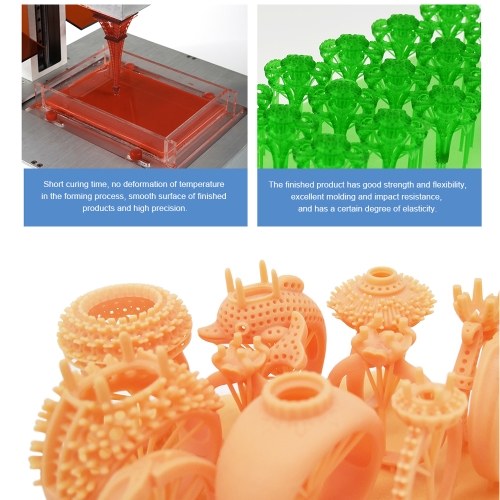
Production speed
DLP and LCD printers generally have a faster production speed than SLA models. Monochrome LCD matrix provides much higher printing speed than a color one, as the latter absorbs more light and the layers are cured more slowly. It’s up to you, whether you need really speedy printing or better save a little money.
Resolution and precision
Important parameters that define how similar your print will be to the original. Resolution and precision are often regarded as synonyms; but nevertheless these two words are close in their meanings, there's a certain difference. Resolution can be defined as the X-Y dimensions (horizontal resolution) and layer thickness in micrometers (vertical resolution). The less the layer thickness is, the higher resolution your printer has, which results in smoother and more detailed prints. Precision rather refers to the consistency of the printer, in other words, it shows if it is capable of providing expected results in every print. If you need fine-detailed prints, then resolution is a crucial thing for you. But don’t forget that higher resolution always means slower printing speed.
If you need fine-detailed prints, then resolution is a crucial thing for you. But don’t forget that higher resolution always means slower printing speed.
Stability
The quality of your prints depends to a great extent on how stable your printer is, if there’s any undesired wobbling during the printing process. To ensure the stability, all the printers in our list are equipped with double linear Z-axis rails to move the build platform up and down. You can also make some steps to improve your device’s stability. First put it on a sturdy, heavyweight surface. Then put a foam or rubber pad under the printer to absorb vibrations. You can also reduce printing speed if this option is not very important for you.
Credit: all3dp.com
Print bed adhesion
It sometimes happens that your prints don’t stick to the print bed, but rather to the FEP film or to the resin vat. It means that the first layer of your project has poor adhesion to the build plate.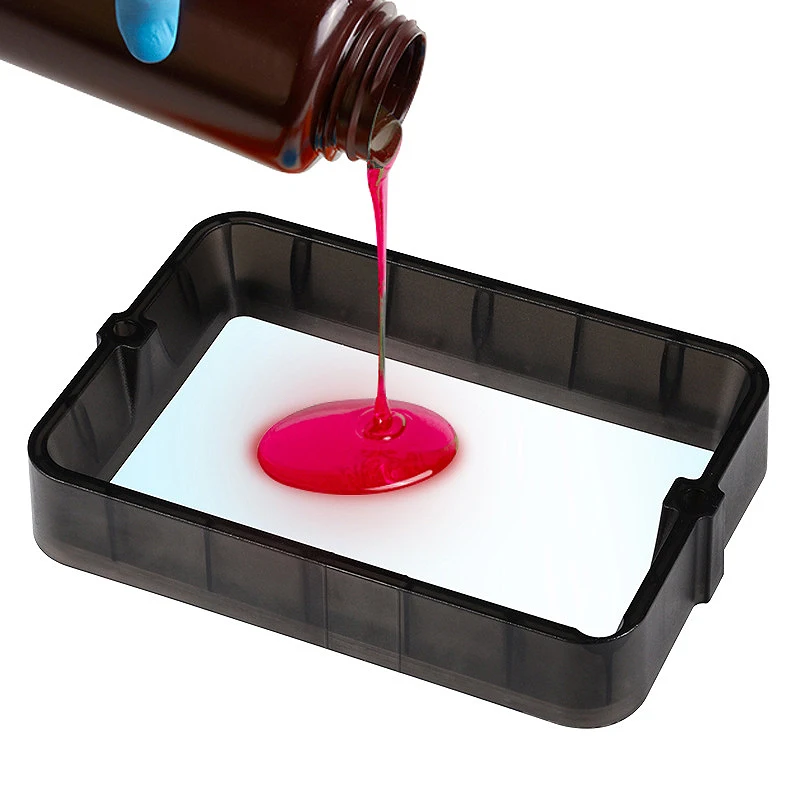 To stop this, you should make sure you have enough bottom layers and the bottom layer has enough time to harden. You can use PTFE spray on your FEP film and let it dry to create a lubricant preventing the resin from sticking to the resin vat.
To stop this, you should make sure you have enough bottom layers and the bottom layer has enough time to harden. You can use PTFE spray on your FEP film and let it dry to create a lubricant preventing the resin from sticking to the resin vat.
Economical
When one is choosing a large resin 3D printer, price can become an important factor as such machines, although becoming more affordable, still cost a lot. If you don’t want to spend extra money, you’d better check all the features to decide what you’re ready to pay for. Such parameters as high printing speed and extreme resolution make the device more expensive, but one can always find a reasonable compromise depending on their needs. Another important thing to keep in mind is consumables. Some printers allow using different types of resins produced by third-party manufacturers, which is great, as you can always choose the best option that suits your budget.
Conclusion
Large resin 3D printers are becoming more and more popular.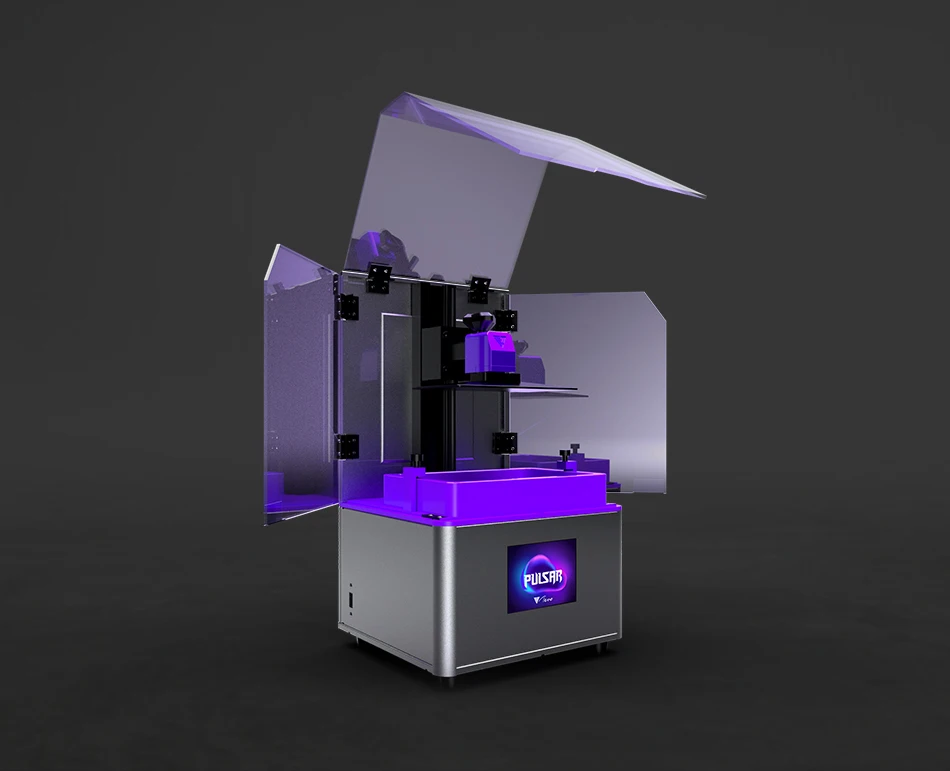 As the technology’s developing rapidly, such machines have entered a lot of various industries, where they successfully meet the goal of high-speed precise printing at a relatively low cost. The vast variety of different resin types, offered by manufacturers, allows for use of resin 3D printers in almost any industry, when one wants to get a finely detailed object with a flawlessly smooth surface, be it dentistry, jewel industry, aircrafting, or even shoes manufacturing, like this famous Adidas 4DFWD model with 3D printed midsoles.
As the technology’s developing rapidly, such machines have entered a lot of various industries, where they successfully meet the goal of high-speed precise printing at a relatively low cost. The vast variety of different resin types, offered by manufacturers, allows for use of resin 3D printers in almost any industry, when one wants to get a finely detailed object with a flawlessly smooth surface, be it dentistry, jewel industry, aircrafting, or even shoes manufacturing, like this famous Adidas 4DFWD model with 3D printed midsoles.
Credit: adidas.com
It’s not only businesses that benefit from the technology of resin 3D printing, but also consumers, as the market of affordable resin 3D printers is growing really fast. So, if you want to purchase the best large resin 3D printer, we do hope that this article will answer your questions and help you make the right choice.
Photopolymer 3D printer
3D printers can be sorted not only by the printing technologies used, but also by the consumables used.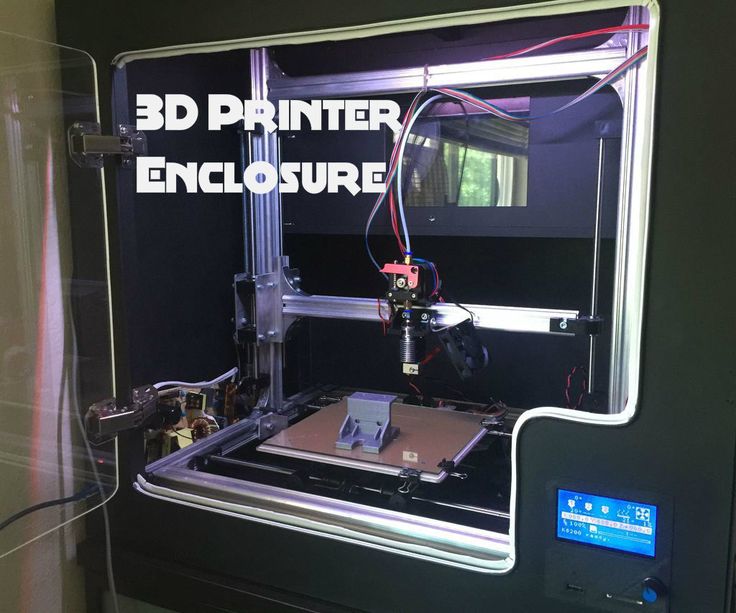 In this section, we will look at devices that use photopolymer resins to build models.
In this section, we will look at devices that use photopolymer resins to build models.
- 1 Consumables
- 2 Laser stereolithography (SLA)
- 3 Projector stereolithography (DLP)
- 4 Multi-jet (MJM and PolyJet)
- 5 3D pens
- 6 Additional illumination
Consumables
Photopolymer resins are liquid polymers that harden when exposed to light. As a rule, such materials are sensitive to the ultraviolet range, which determines the design of photopolymer printers. One of the common design elements is a transparent colored cap or housing made of a material that filters ultraviolet radiation. This is done both to protect the user's eyes and to protect the supplies inside the printer from exposure to sunlight and background lighting.
Photopolymer resin loaded into Form 1 3D printer
The physical properties of resins after polymerization vary widely.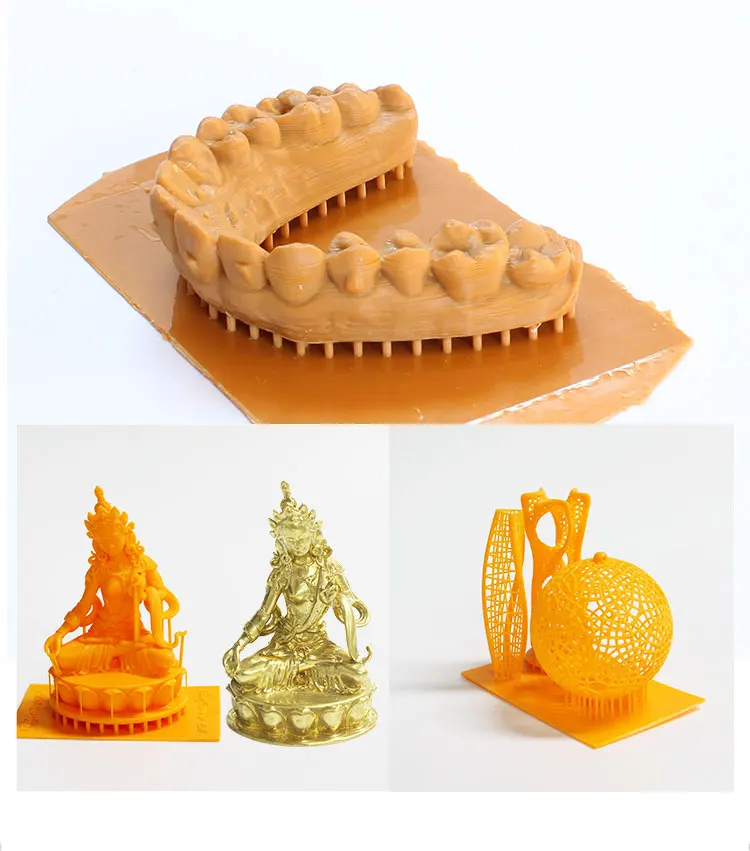 Both rigid and flexible options are available, transparent and matte. A wide selection of colors is also available. Resin consistency and exposure times also vary, so a range of compatible media should be considered when choosing a printer.
Both rigid and flexible options are available, transparent and matte. A wide selection of colors is also available. Resin consistency and exposure times also vary, so a range of compatible media should be considered when choosing a printer.
The last aspect to consider when choosing a material is its toxicity. There are both quite toxic options and biologically safe ones.
The cost of consumables can be considered the Achilles' heel of photopolymer printing. The plants themselves are already reaching quite acceptable price levels, but it is still quite difficult to find inexpensive photopolymer resins. It is hoped that the proliferation of inexpensive photopolymer printers will lead to an increase in the production of consumables and lower prices.
Laser Stereolithography (SLA)
SLA Model
The firstborn of photopolymer printing and modern 3D printing in general. The technology was developed in 1984 by Charles Hall, who later founded 3D Systems.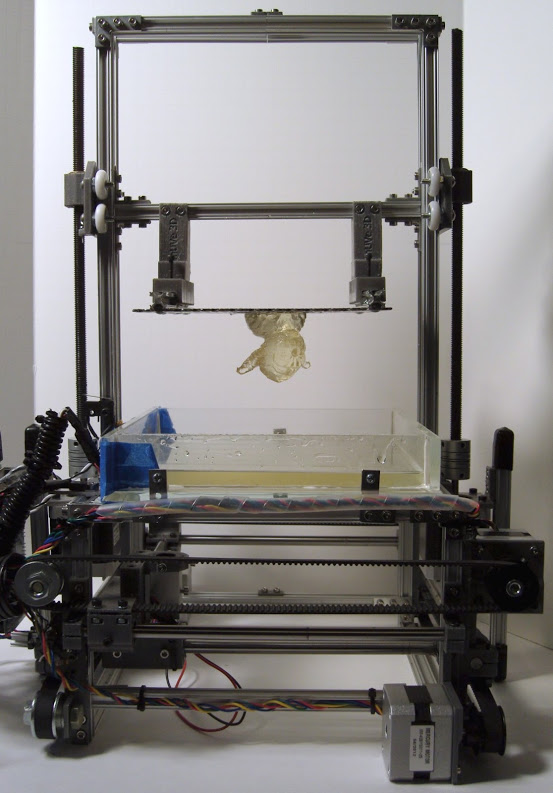
SLA printers use laser emitters to cure the photopolymer supply.
A typical SLA printer consists of a consumable tray sitting under a build platform driven vertically by a raise/lower mechanism.
Alternatively, the cuvette itself can be driven - what matters is the relative movement of the platform and the container. Above the cuvette is a laser emitter and a mirror system for deflecting the laser beam.
During the printing process, the platform is immersed in the consumable for the thickness of one layer of the digital model.
Since photopolymer resins can be quite thick, a leveling mechanism is often used to speed up the process.
SLA printer operation scheme
After leveling, the process of illumination of the material begins. Illumination is produced by laser irradiation. Most photopolymer resins are designed to cure (polymerize) when exposed to ultraviolet light, which determines the choice of laser frequency.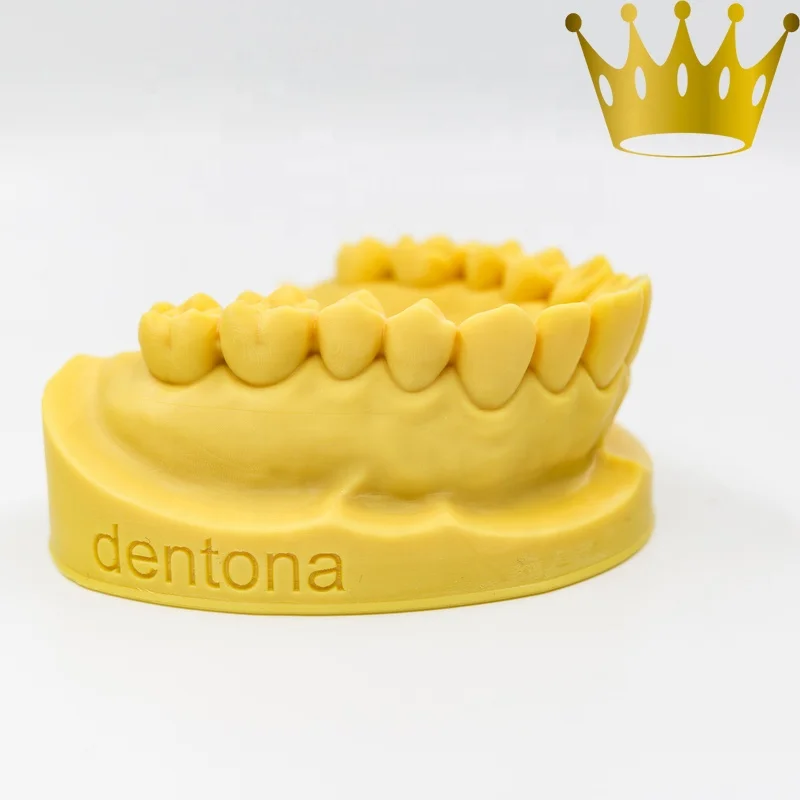 The movement of the beam along the X and Y axes is determined by the operation of the deflecting mirrors.
The movement of the beam along the X and Y axes is determined by the operation of the deflecting mirrors.
After the drawing of the layer is completed, the platform is immersed in the material for the thickness of one more layer, and the process is repeated with the drawing of the next layer of the digital model.
Model building animation
SLA printing takes quite a long time, and printers using this method tend to have relatively small build areas.
This is mainly due to the high cost of laser emitters: printing large objects with a single laser will take too much time, and installing additional emitters and mirrors will complicate the design, increase the dimensions of the installation and raise the price to an unacceptable level for most users.
Despite the success of this technology, projected stereolithography is considered to be a more promising, although very similar method.
Projector Stereolithography (DLP)
Formlabs Form 1 Desktop DLP Printer
A close relative of laser stereolithography, this method uses digital LED projectors instead of laser machines with mirror deflection systems.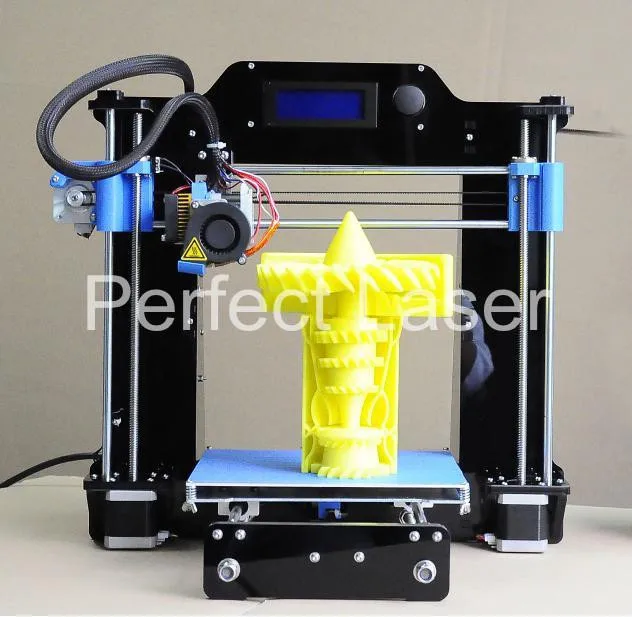 The method became popular due to the development of technology for the production of low-cost high-resolution digital projectors by Texas Instruments.
The method became popular due to the development of technology for the production of low-cost high-resolution digital projectors by Texas Instruments.
Layers are illuminated using a digital projector that highlights patterns of the entire layer, which distinguishes this method from SLA, where the "picture" emerges progressively using an ultraviolet laser.
A similar approach has previously been used on SGC-type plants, but this technology used physical photomasks, making the process costly, time consuming, slow and noisy.
At the moment, the FTI technology continues to exist - the development of SGC, almost indistinguishable from DLP printing, since it also uses digital LED projectors.
DLP printer design
Simultaneous illumination of an entire layer using projectors can significantly speed up the printing process even compared to SLA printers that have a high scanning speed (ie beam movement).
In addition, these printers are less sensitive to rough physical impact due to the absence of delicate mirror systems.
The absence of mechanical mirror systems improves accuracy. Finally, the cost of projectors sets them apart from laser systems.
Projection size can be quite significant, reaching the average of popular FDM printers.
An interesting feature of DLP printers is the ability to "reverse" or "reverse" printing.
In this case, the projector is installed under a transparent (material choice for transparency in relation to ultraviolet light) cuvette, and the platform does not sink into the material, but gradually rises, pulling out the layers of exposed polymer.
This approach eliminates the alignment mechanism and achieves even higher Z resolution than SLA printers.
In addition, the size of models in height is not limited by the depth of the cuvette, which favorably affects the dimensions of the printer and the possibility of increasing the build area.
Multi-jet printing (MJM and PolyJet)
3D Systems ProJet 3500HDMax MJM printer
MJM and PolyJet technologies are practically indistinguishable from each other. The name difference comes from the respective patents: Multi Jet Modeling is owned by 3D Systems, while PolyJet is owned by rival Stratasys.
The name difference comes from the respective patents: Multi Jet Modeling is owned by 3D Systems, while PolyJet is owned by rival Stratasys.
The very principle of multi-jet polymer printing was developed by the Israeli company Objet, which eventually became a division of Stratasys.
Multi-jet printing technology combines features of 3D inkjet printing (3DP) and projection stereolithography (DLP).
How the MJM PolyJet printer works
Models are built by spraying photopolymer using linear arrays consisting of multiple nozzles.
The applied layer is immediately exposed to ultraviolet lamps - as a rule, two processes occur simultaneously.
By the time the array reaches the end of the build chamber, the previously deposited material is hard enough to print a new layer.
Composite models created on the ProJet 3500 DP dental printer
This approach allows to achieve very high printing speed, but is characterized by high design complexity, which negatively affects the cost of such installations and limits their distribution to professional use.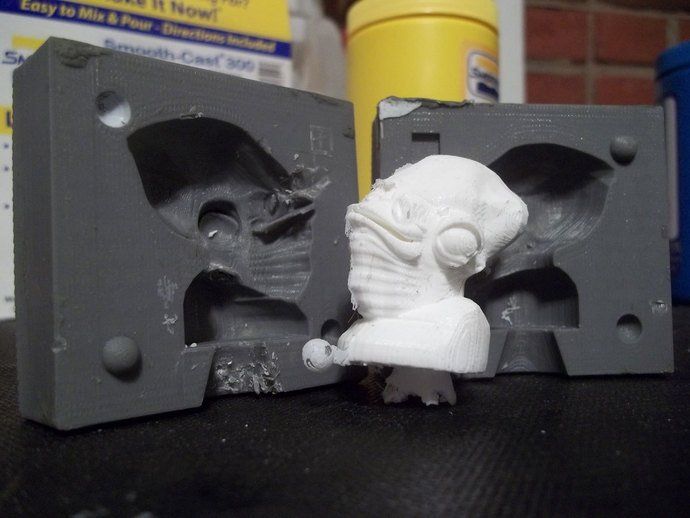
One of the advantages of MJM and PolyJet technologies is the ability to create composite structures from photopolymer resins with different physical characteristics.
It is therefore possible to create models with easily removable supports, use multiple colors and use flexible and rigid materials in parallel within the same model.
3D Pens
CreoPop 3D Pen
Recently, there has been a craze for hand-held printing devices called 3D pens. At the moment, there are three main options for such devices: drip-jet pens (DOD), called BioPen and used in the development of new methods for treating damaged tissues, FDM 3D pens, which are manual extruders (essentially similar to the usual hot glue guns, but using thermoplastics) and developments in 3D-drawing with photopolymer resins.
CreoPop 3D pen was the first "handheld resin printer". The design of this device is quite simple, because the most complex function, positioning, is performed by the user himself. The pen only extrudes resin through the tip surrounded by LED emitters.
The pen only extrudes resin through the tip surrounded by LED emitters.
CreoPop 3D pen in action
This way the resin hardens immediately after application, allowing you to literally draw on air.
The advantage of such handles over FDM-analogues is the low operating temperature - there are no heating elements in the device. As a result, with such pens you can even draw on the skin.
In addition, a wide range of photopolymer resins with different physical properties can be used with such devices, which greatly expands the range of possible applications. At a minimum, this is a relatively inexpensive, but entertaining toy.
The only drawback is the relatively high cost of consumables, but such devices are unlikely to require large volumes of photopolymer resin when used in everyday life.
Additional Lighting
Final Lighting of Resin Models in a Homemade Camera
Full curing of models can take quite a long time, so models during SLA and DLP printing are only partially polymerized, sufficient to maintain the physical shape of the part.
After production, the models are usually placed in chambers equipped with ultraviolet lamps until fully cured. Of course, if possible, you can simply lay out the models in the sun - the effect will be the same.
Just keep in mind that ordinary glass practically does not transmit ultraviolet light, so exposure to sunlight must be direct.
If desired, a UV-transparent quartz glass container can be used.
Go to the main page of the Encyclopedia of 3D Printing
How safe are 3D printing resins?
Filament Deposition Modeling (FDM) material extrusion is the most popular polymer 3D printing method, but resins are becoming more and more important to consumers. Resin technologies such as stereolithography (SLA) were previously only used in dental laboratories, engineering departments and manufacturing plants due to the high cost of the equipment. Now that machines have become more affordable, more and more ordinary users are using SLA technology, which calls into question their safety.
Unlike FDM devices, resin printers use photosensitive liquids to print, curing materials with ultraviolet light. Liquid polymers pose a greater potential health risk than raw materials in fiber form. The toxicity of the resource may put off some users, but printing with resin can be safe if the right algorithm is followed.
What are the Potential Risks of Resins
The word "toxicity" is troubling, but according to the definitions developed by occupational health and safety professionals, any substance that, under certain conditions, can cause harm to health or disease, is "toxic". According to this formulation, many substances around us are potentially dangerous, including perfumes and mattress filling. But are there any particular risks when using liquid resins for 3D printing?
The main concern with photopolymer resins is that they can cause skin irritation on contact. In some cases, contact of the substance with unprotected skin results in burns and blisters, which may require medical attention. If the materials come into contact with the eyes, they will cause irreparable damage.
If the materials come into contact with the eyes, they will cause irreparable damage.
Many resins are sensitizers, which means that prolonged exposure sometimes causes a mild allergic reaction. The chemicals that make up most resins are irritants that provoke the appearance of dermatitis - inflammation of the skin due to rejection of foreign elements. The skin quickly absorbs such chemicals, so prolonged contact with the composition or exposure to a large dose can lead to more serious consequences.
Another problem with resin 3D printing is air pollution. The material releases fumes, potentially reducing indoor air quality (IQA). Poor IQA scores can lead to headaches, fatigue, or more serious reactions such as breathing problems. These effects are due to volatile organic compounds (VOCs) and other small particles that cause an inflammatory response in the airways, leading to swelling or tenderness.
Long-term effects from working with liquid polymer are rare but significant:
• If the vapors are inhaled for a long time, chronic diseases of the respiratory system may appear.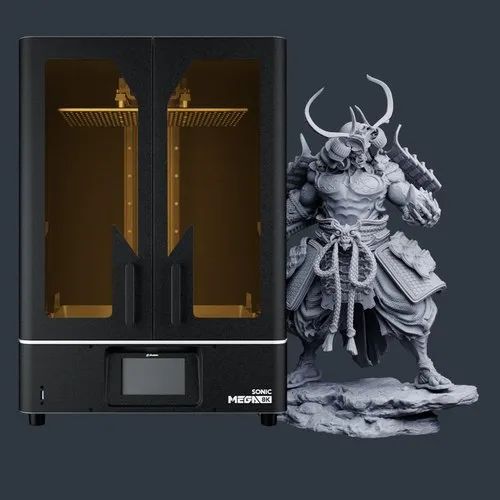
• Some of the VOCs emitted by resins are suspected to be carcinogens, so they are likely to cause cancer after prolonged exposure.
• Constant physical contact can lead to severe allergies.
Standards and manufacturer's instructions
On the other hand, most resins on the market do not pose a significant hazard. Companies that produce such materials must comply with government standards and additional recommendations ISO 9001. Regulations ensure that chemicals produced by businesses are minimally harmful. However, some hazardous elements, such as asphalt fumes and synthetic mineral fibers used in fiberglass, are still widely used and over half a million workers are exposed to them.
Manufacturers usually provide Material Safety Data Sheets (MSDS) that list any potential health concerns. For example, corneal burns from overexposure to the eyes, or nausea and vomiting if swallowed. All these documents are provided in order to provide users with maximum safety when using consumables.
Some compounds may be more dangerous than others for certain people. If a person does not know if they are allergic to any materials, they should act as if they are and handle the product with care.
Safety Steps
Several government agencies have conducted research into the safety of epoxy 3D printing. They all showed that long-term emissions from printing are mostly negligible, although risks exist if proper precautions are not taken. Since studies have found traces of hazardous substances when working with resin formulations, safety regulations must be observed.
3D printing resins are not as scary as they seem, but they still need to be handled with care. First of all, direct contact of the mass liquid with any part of the body must be avoided. Safety goggles and nitrile or latex gloves should always be worn to prevent toxins from getting into the eyes or onto the skin.
Also make sure that the work area is well ventilated. Ventilation is critical for any 3D printer, but especially for resin printing equipment.